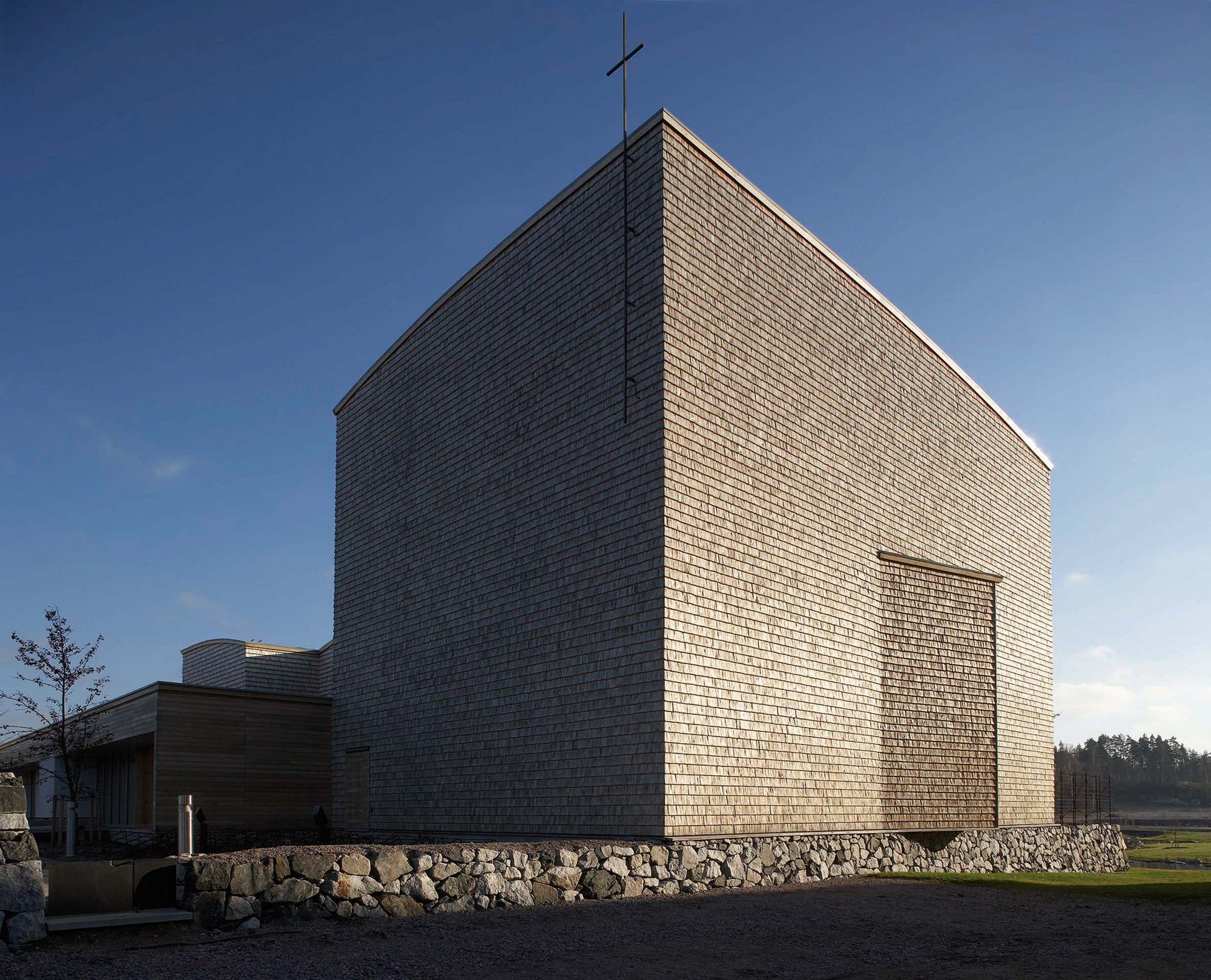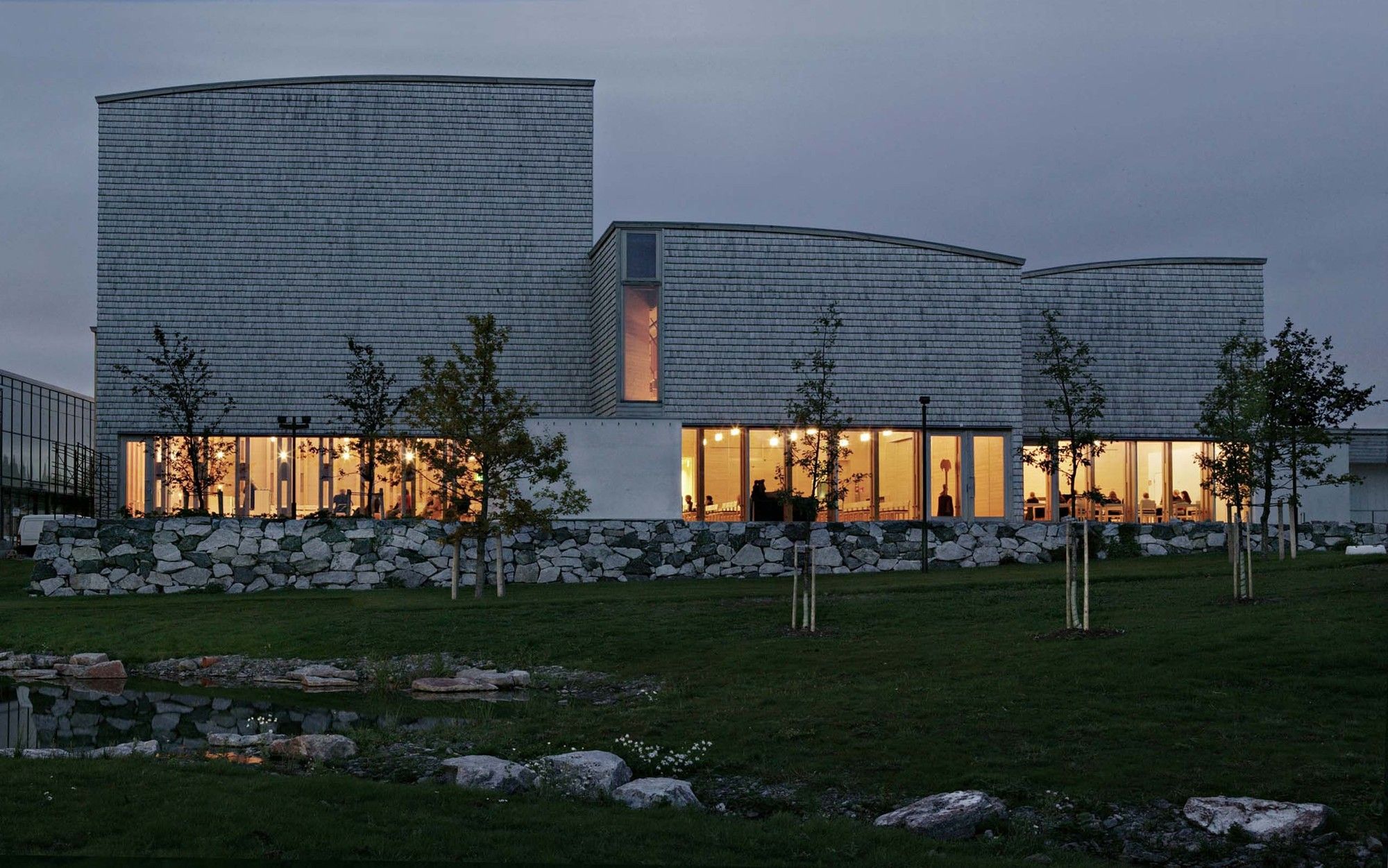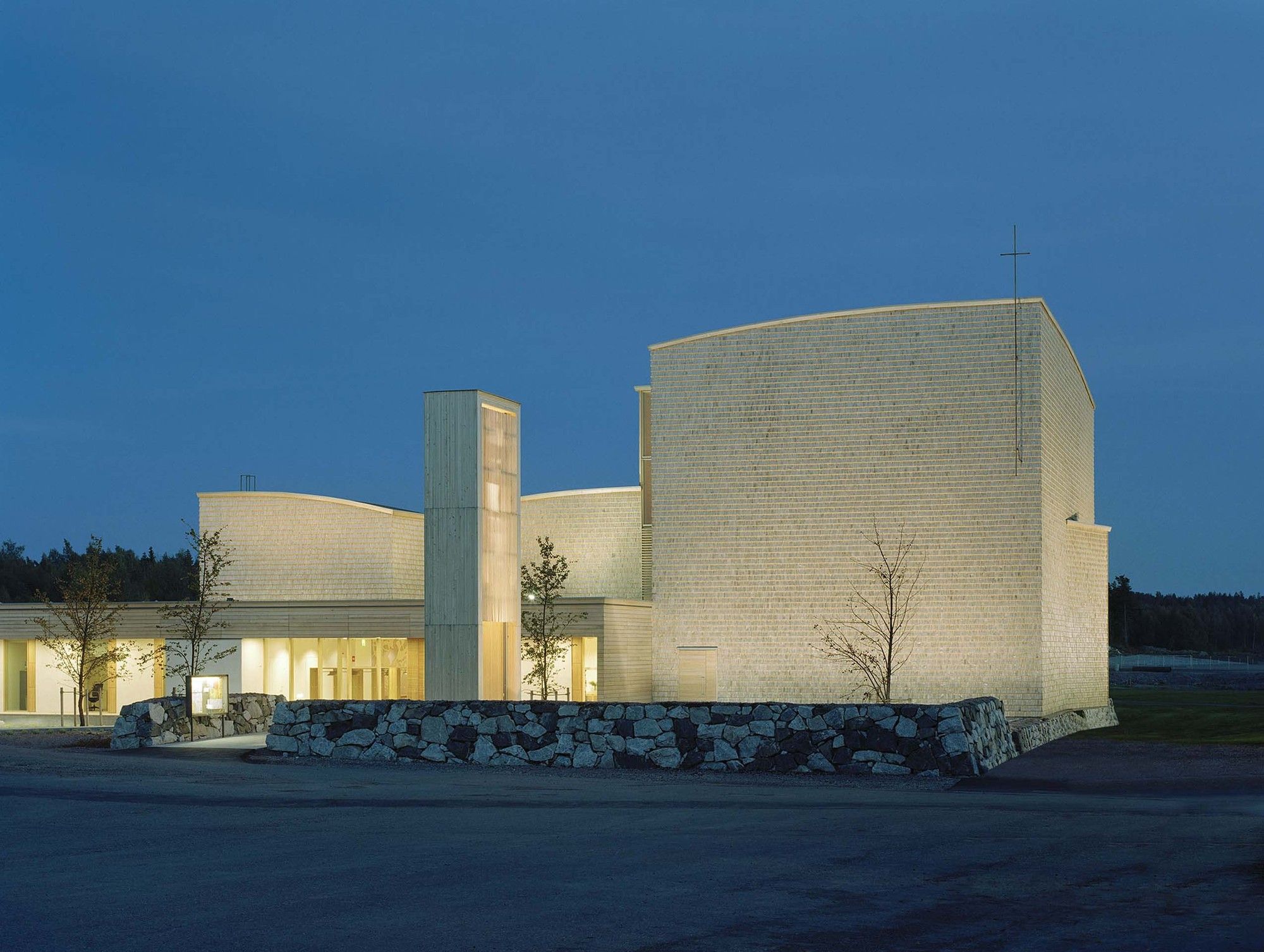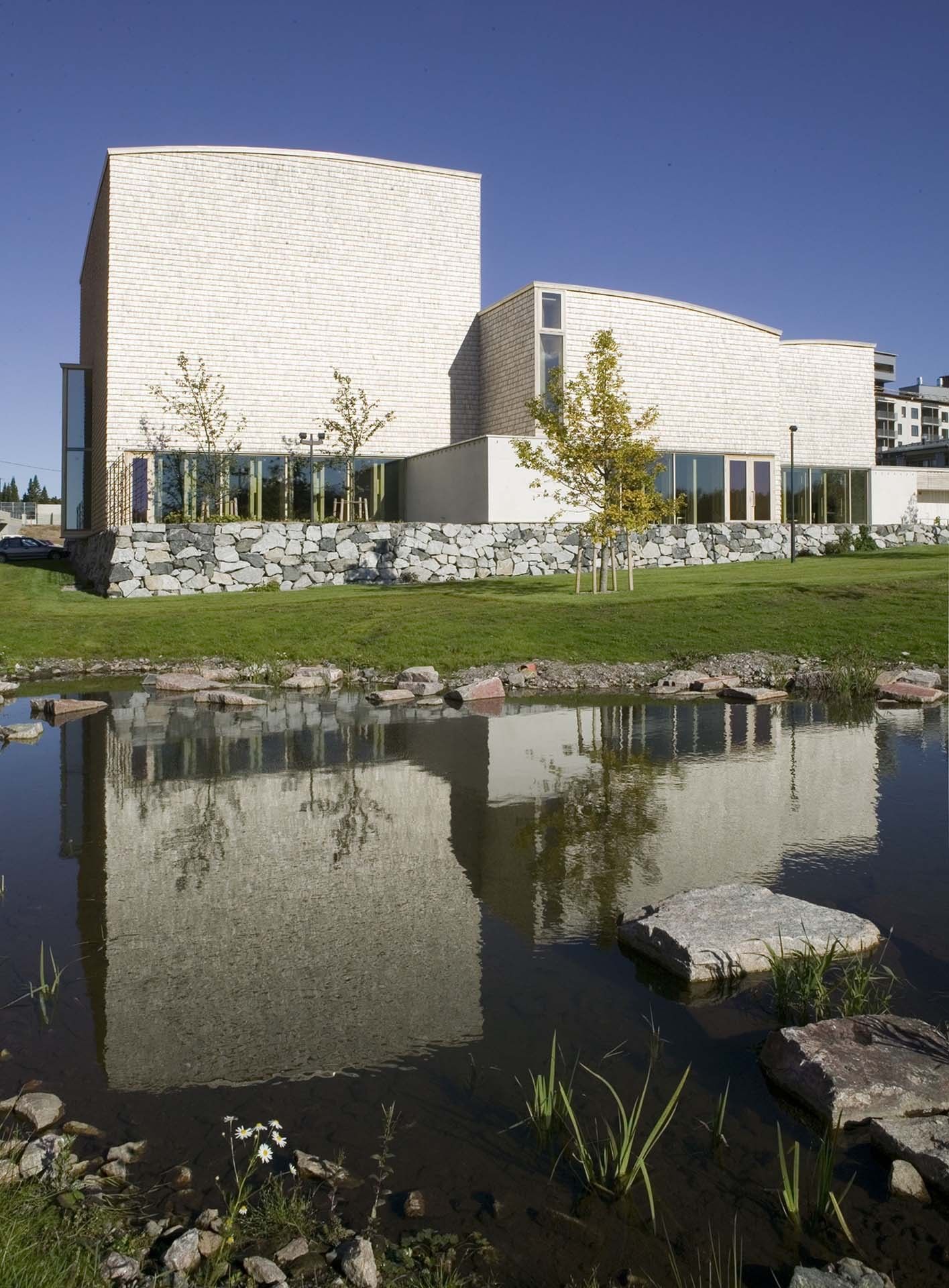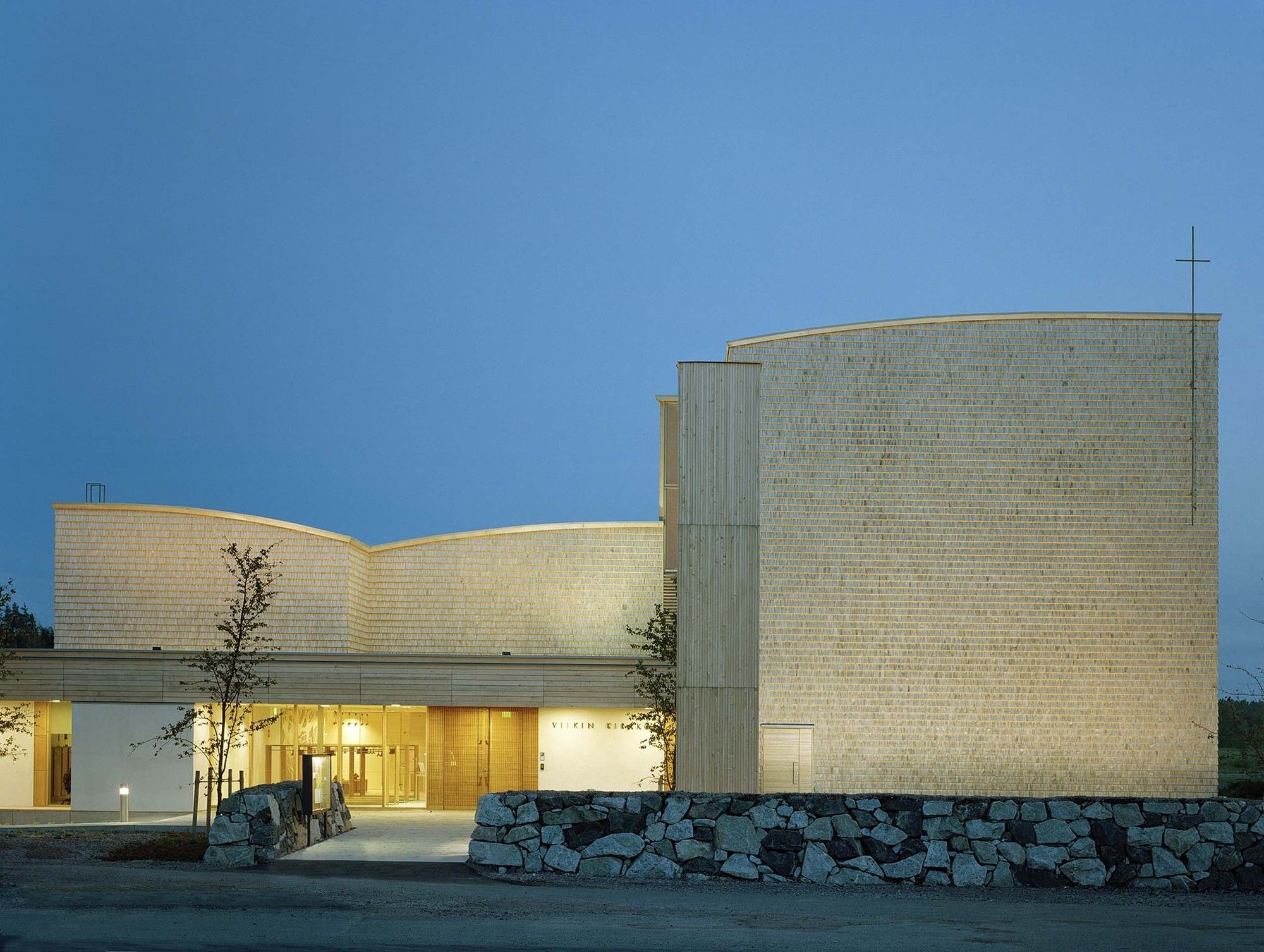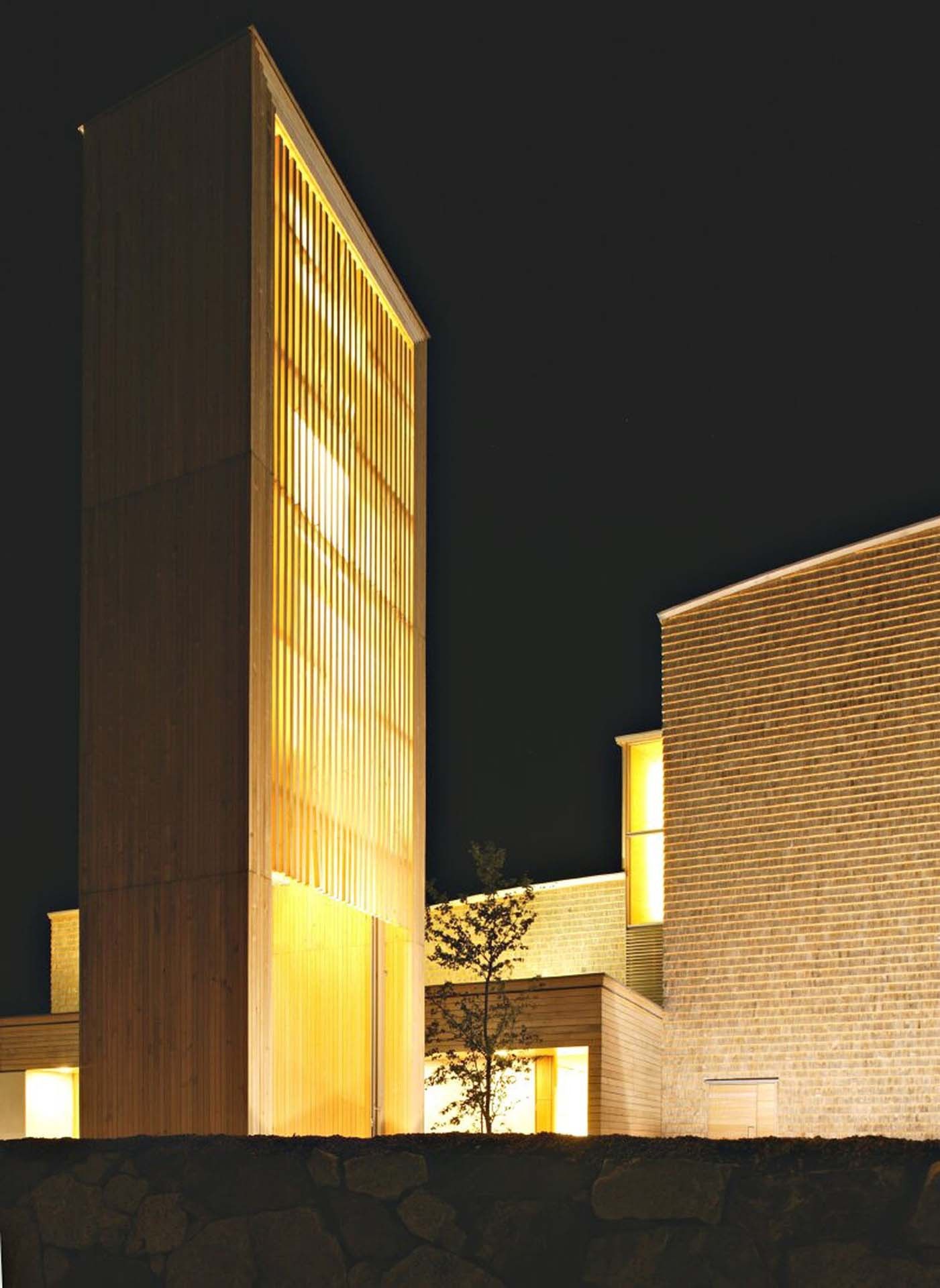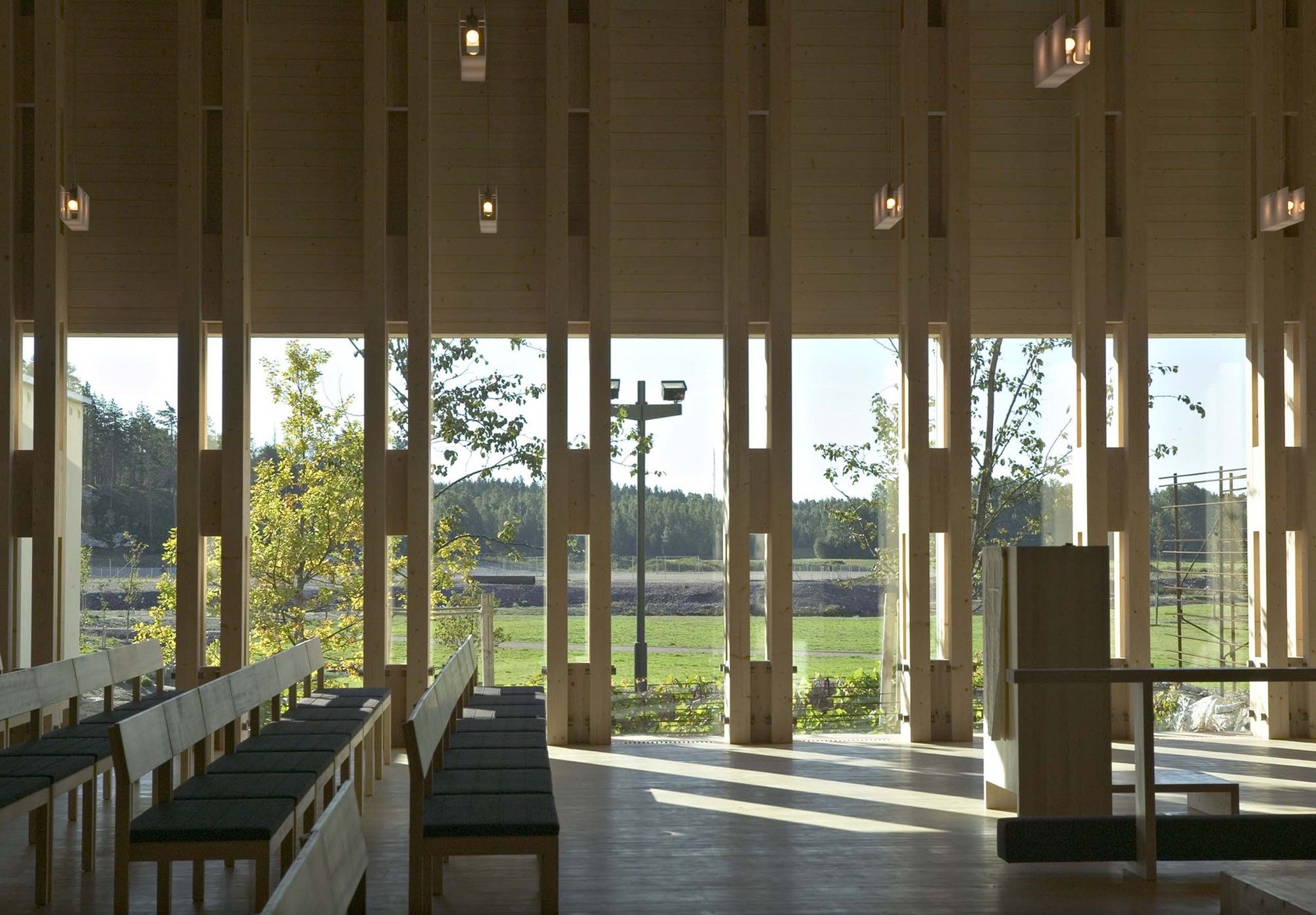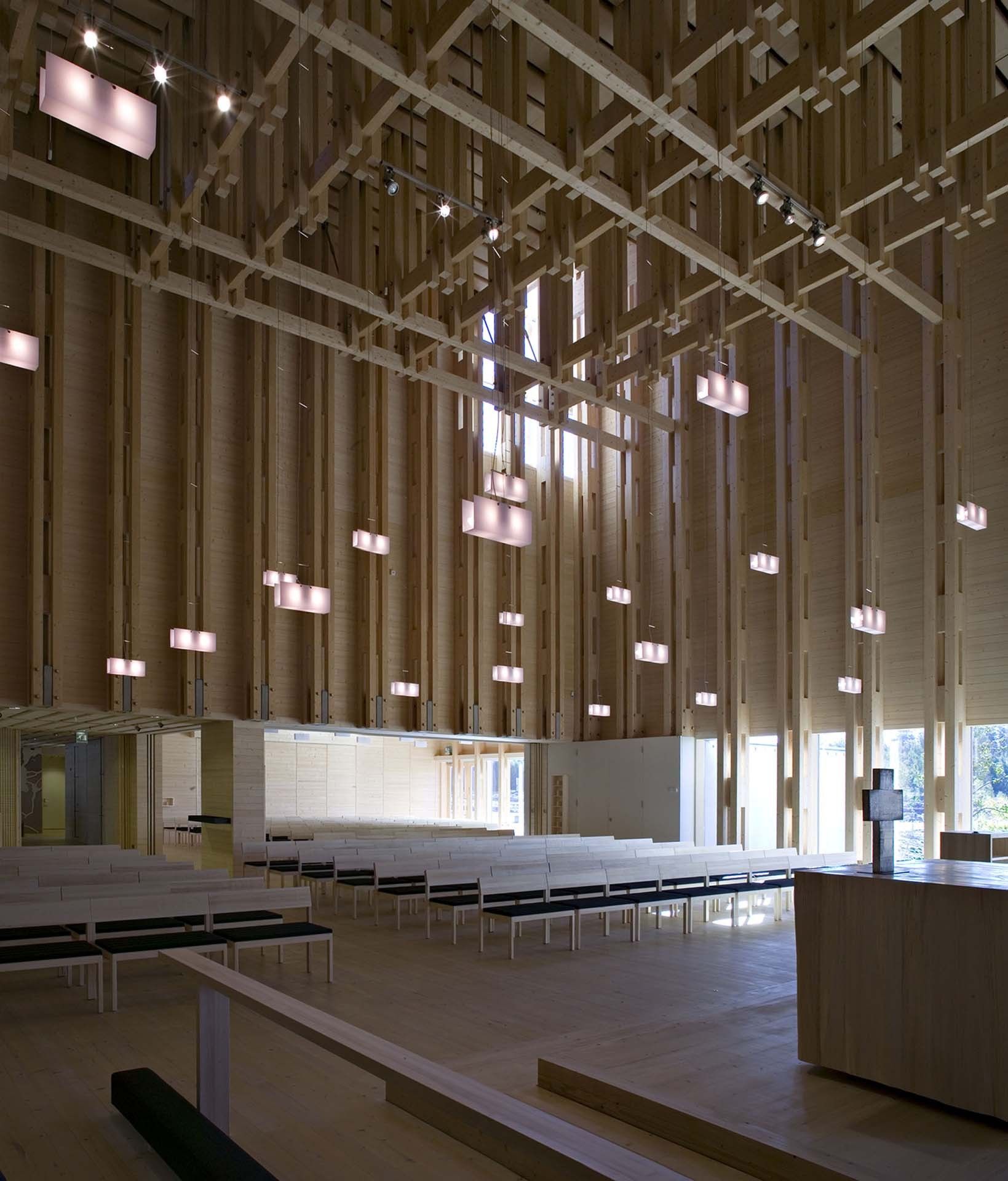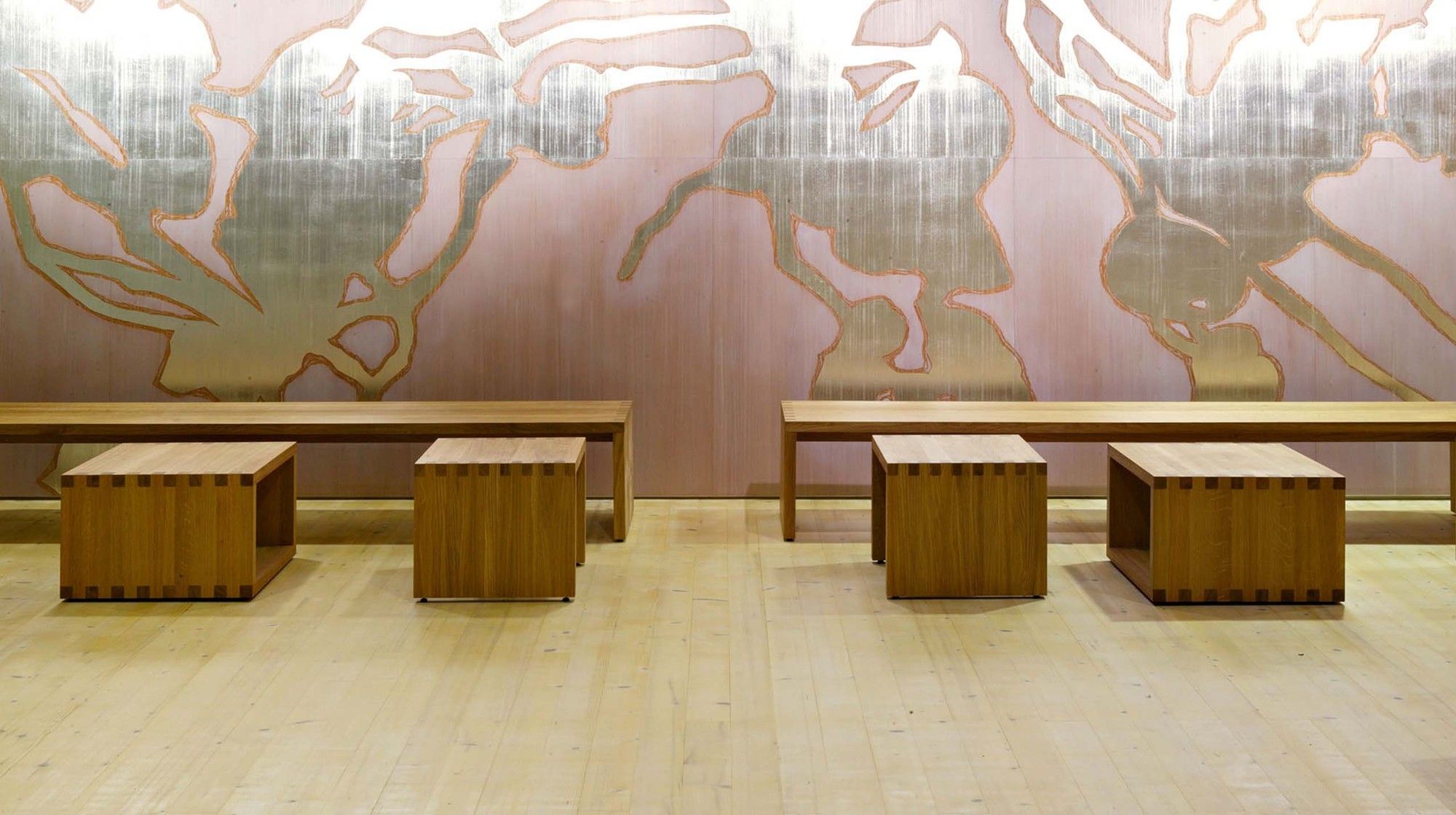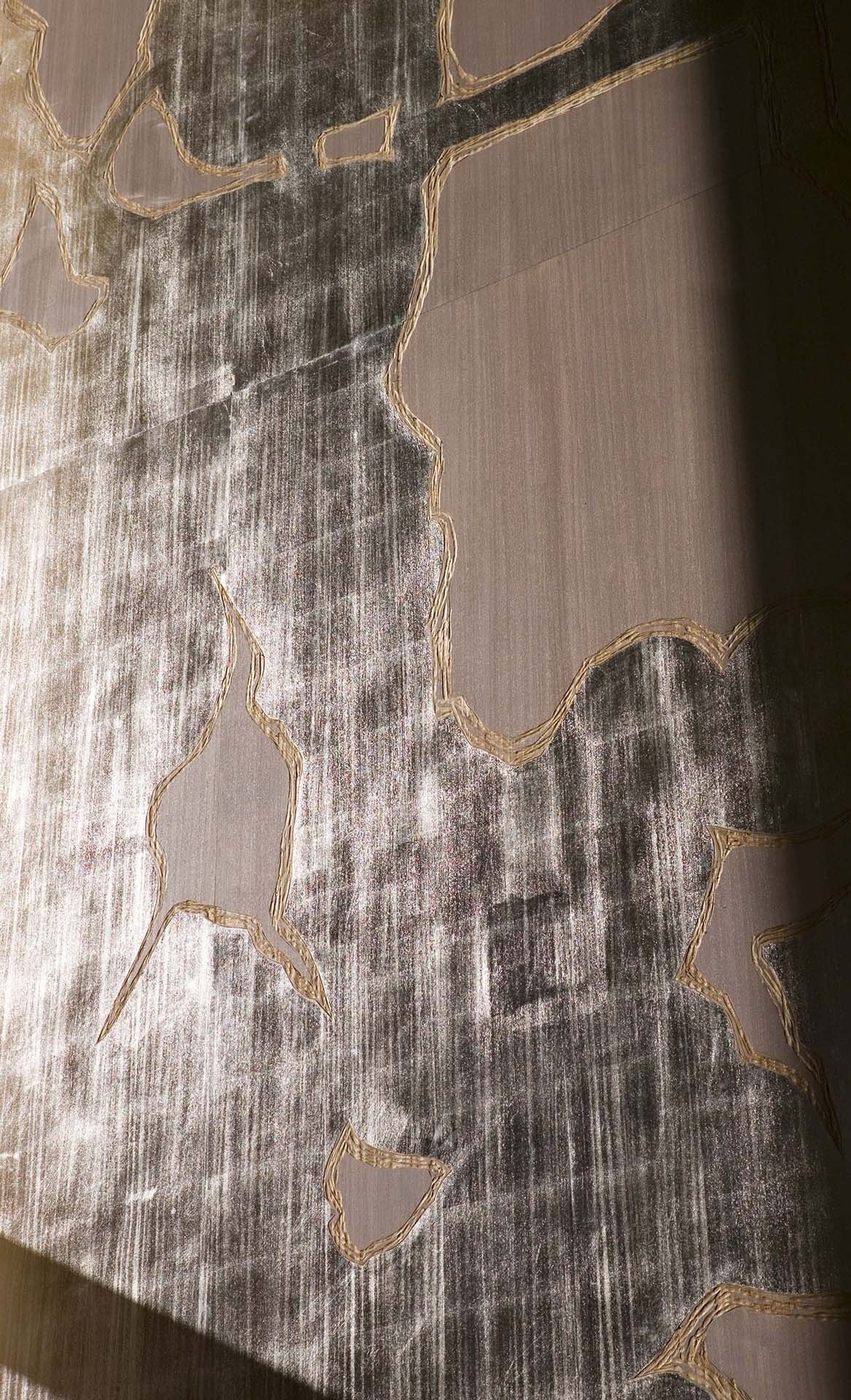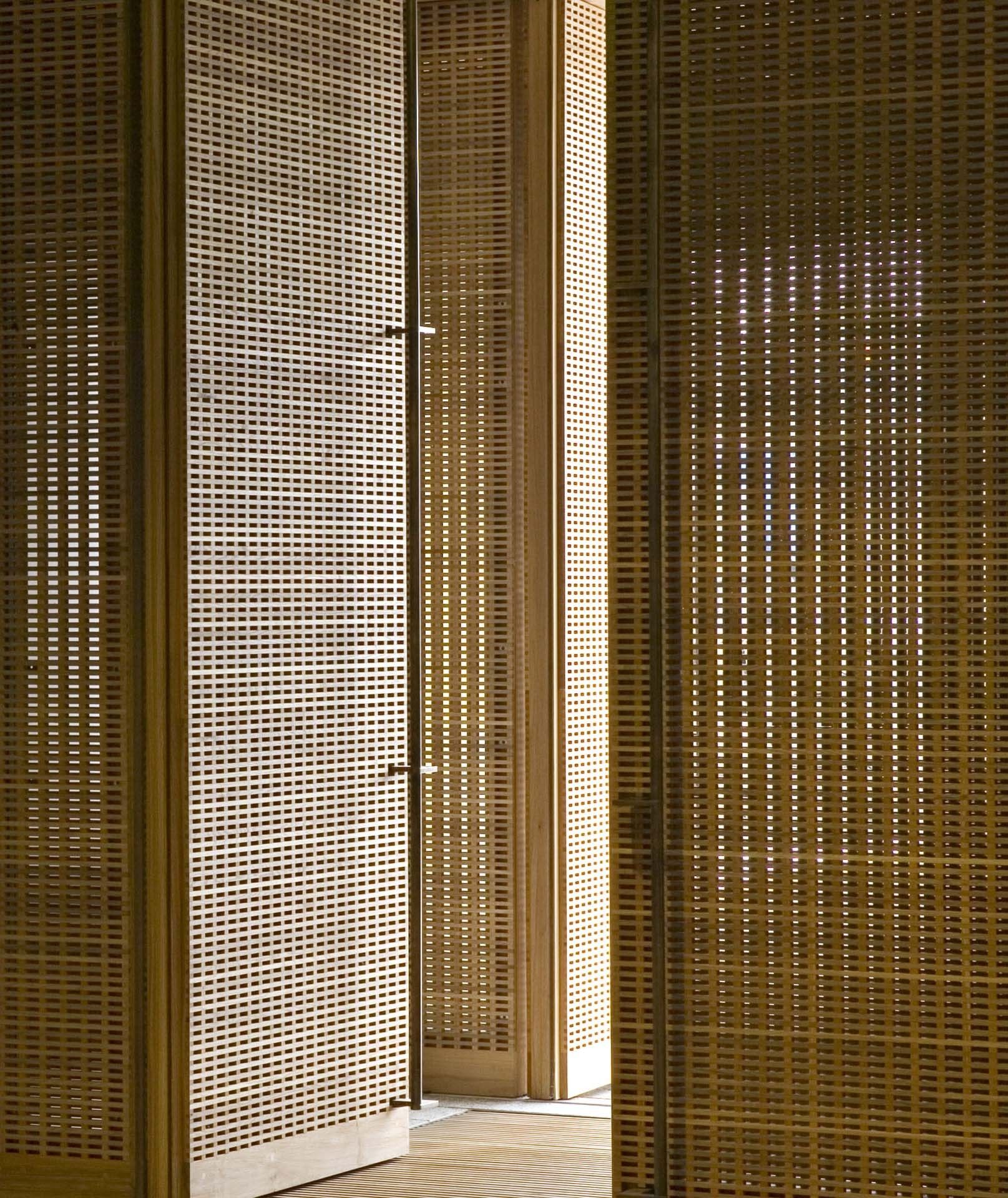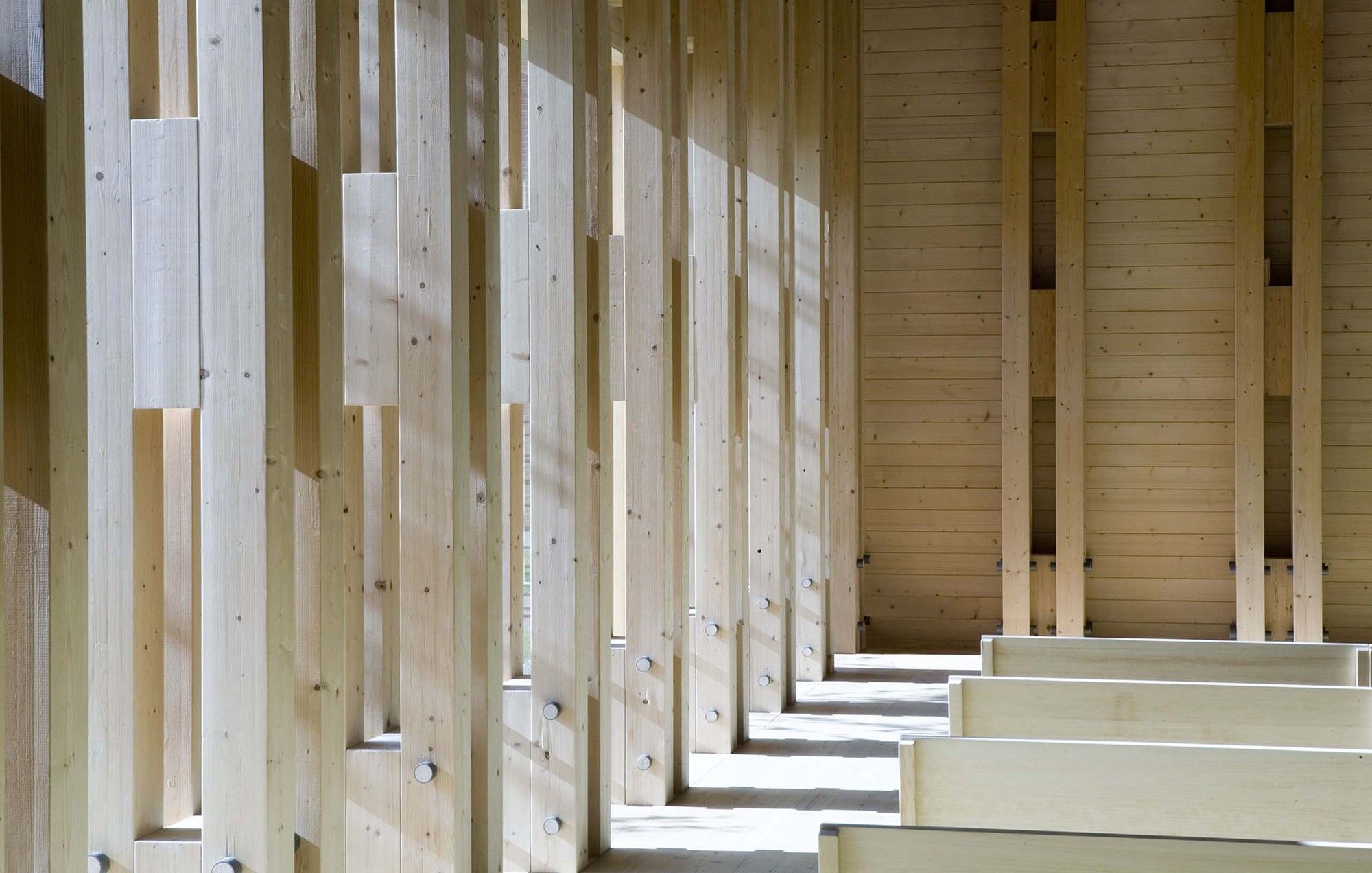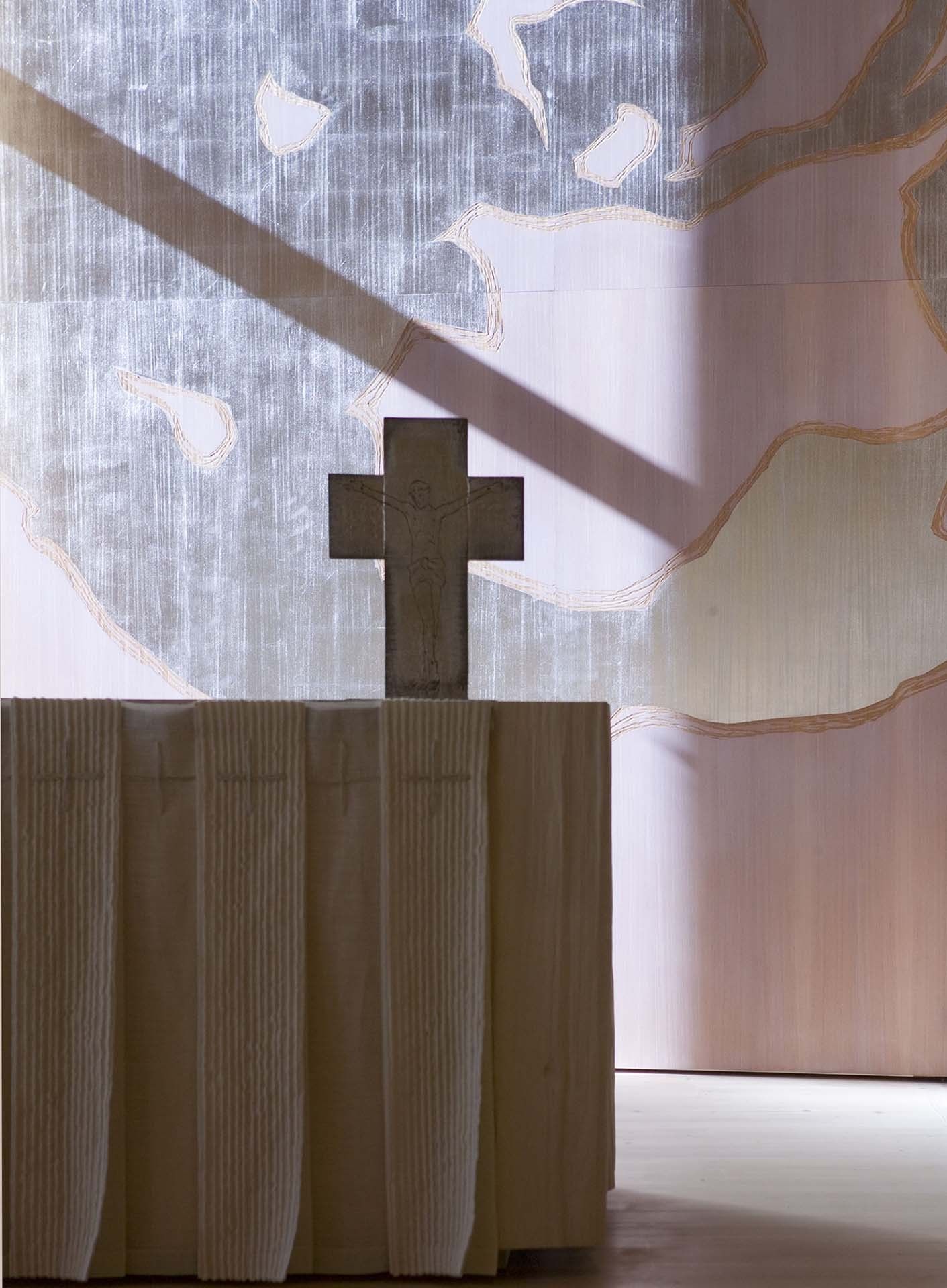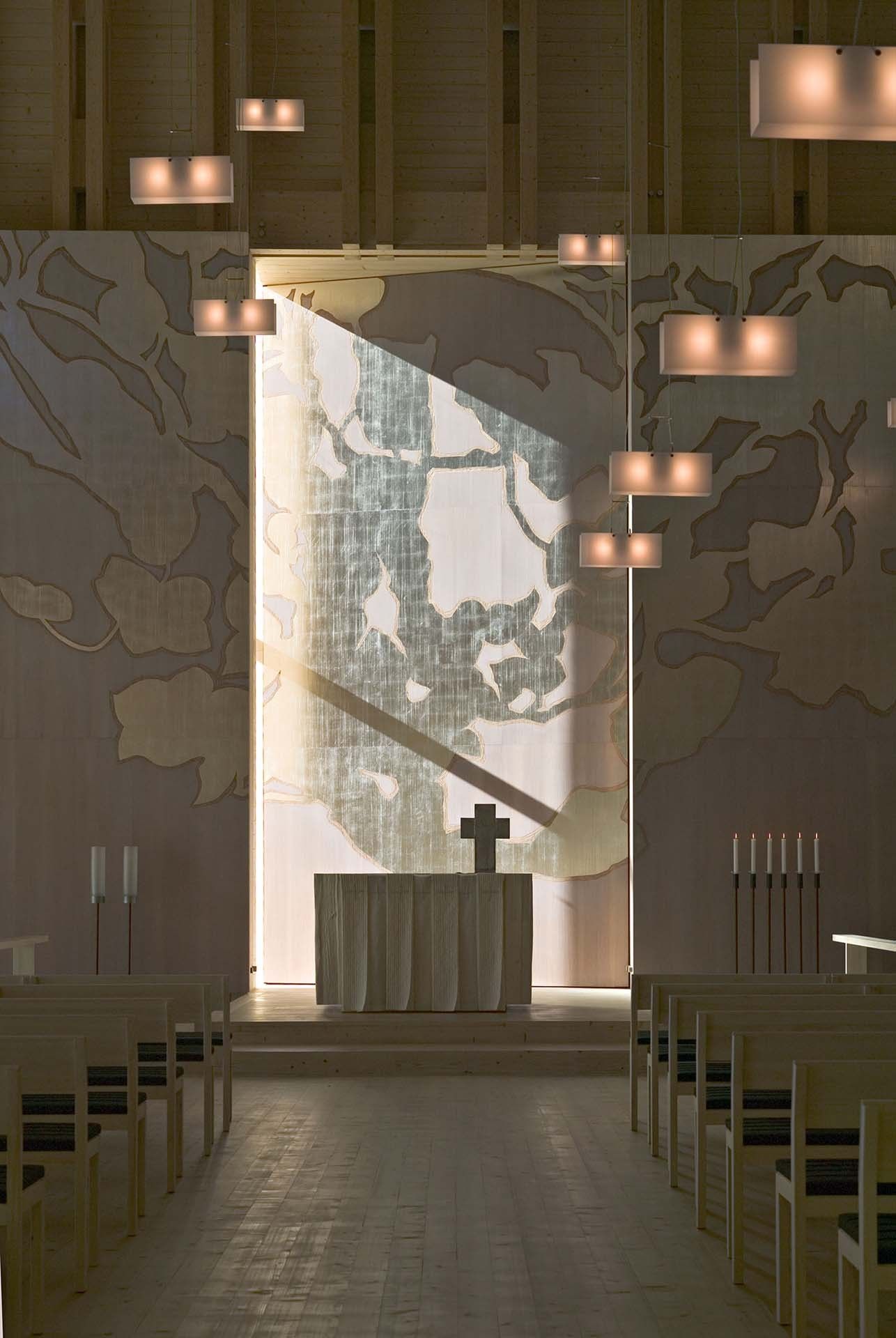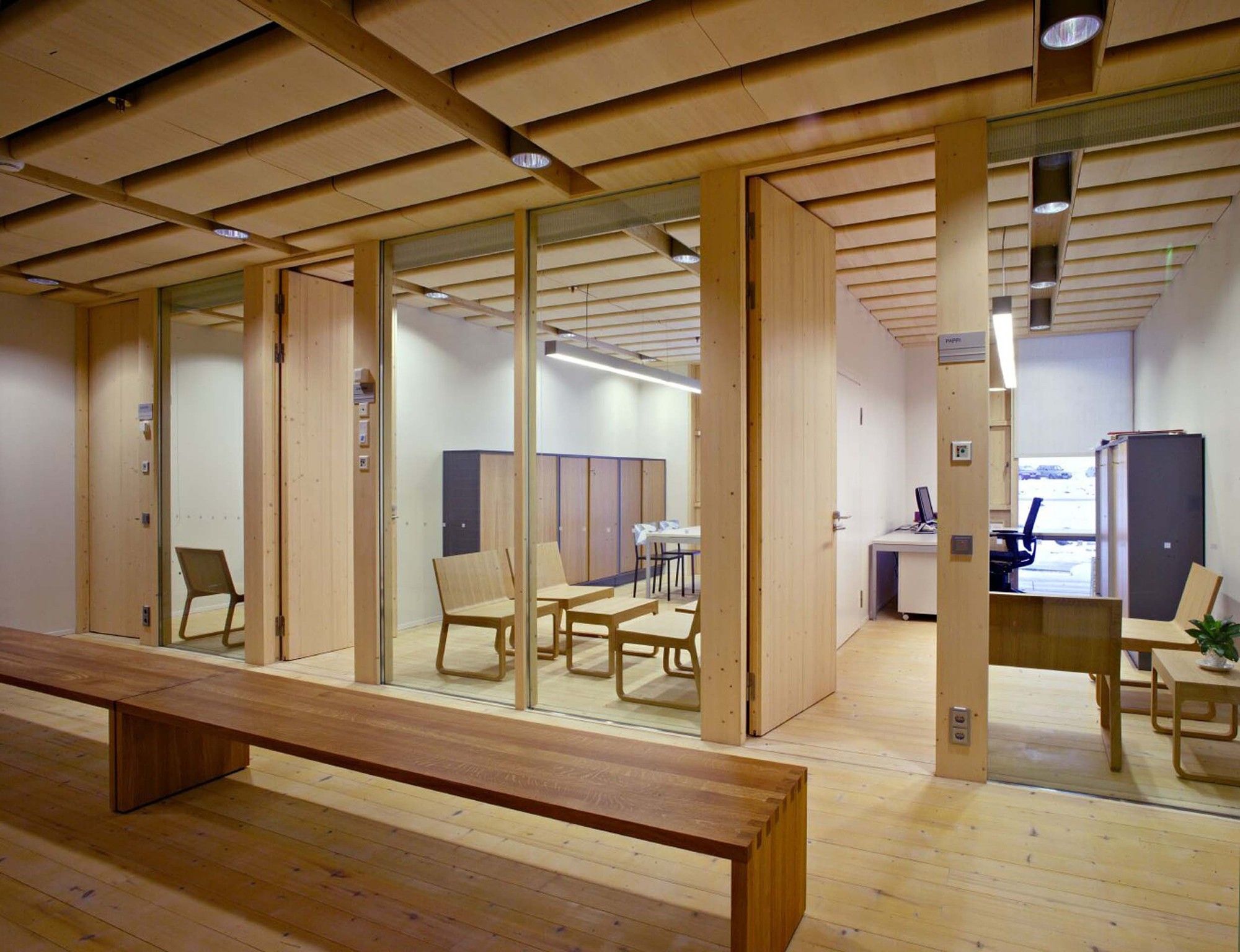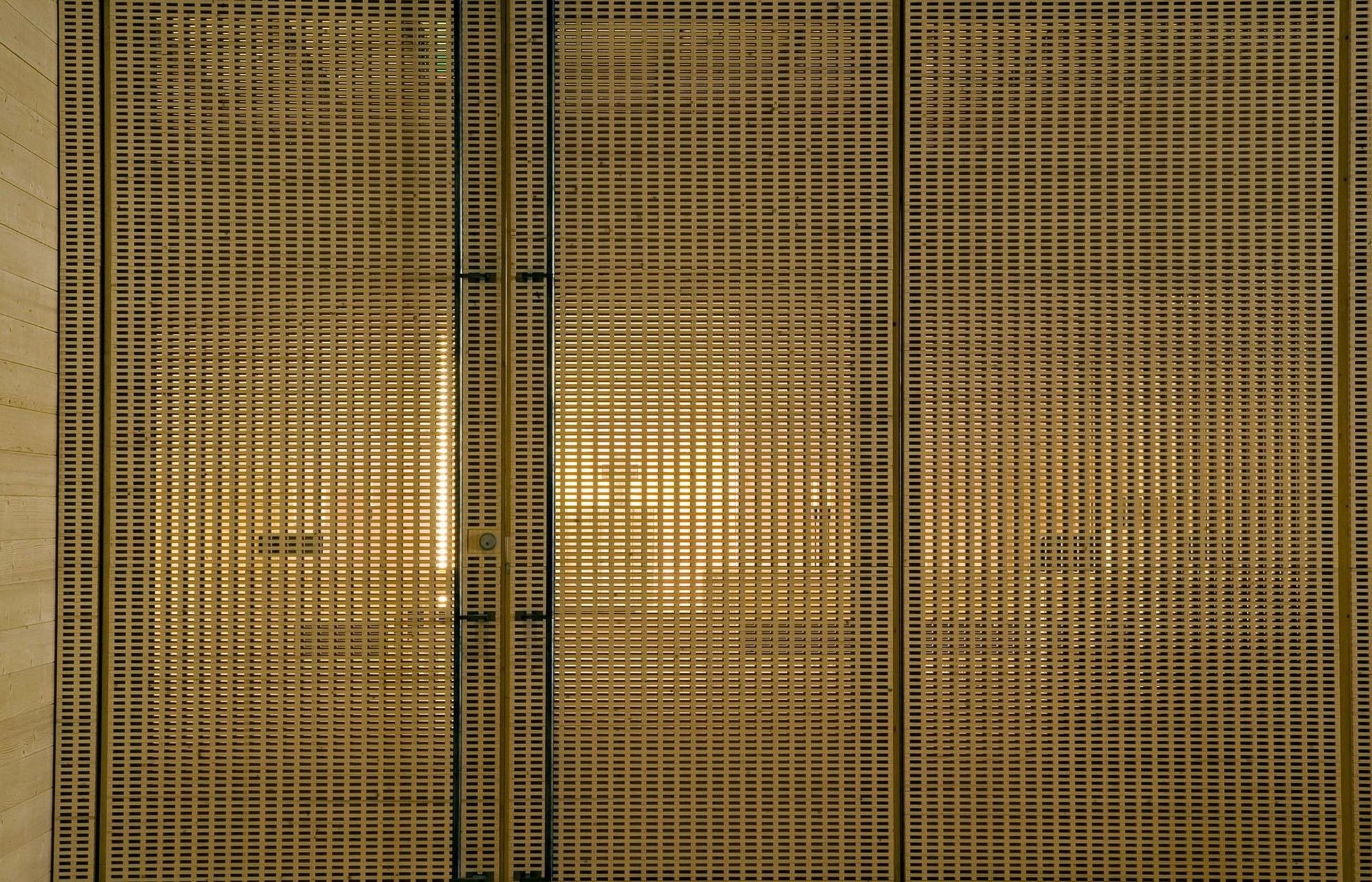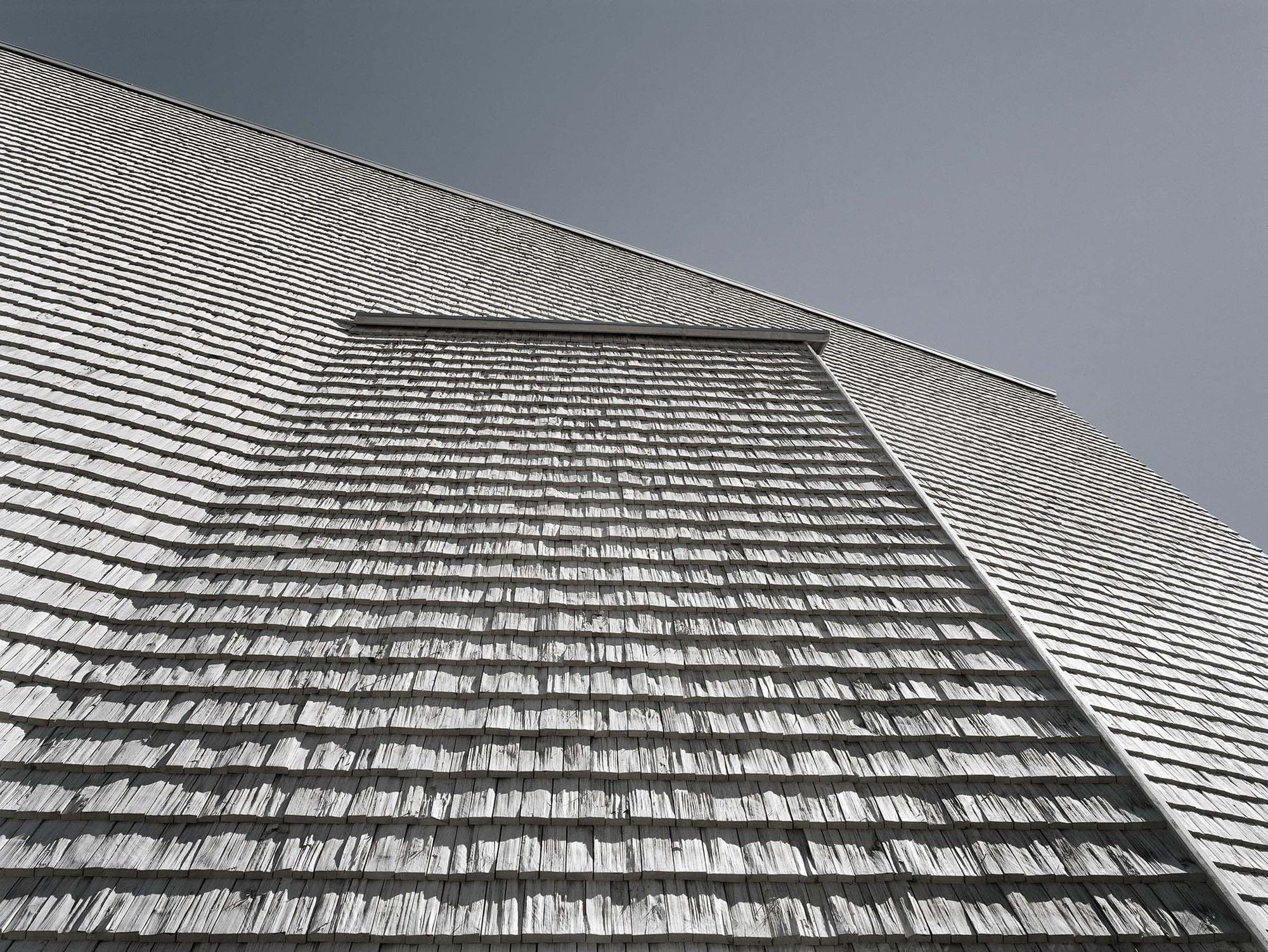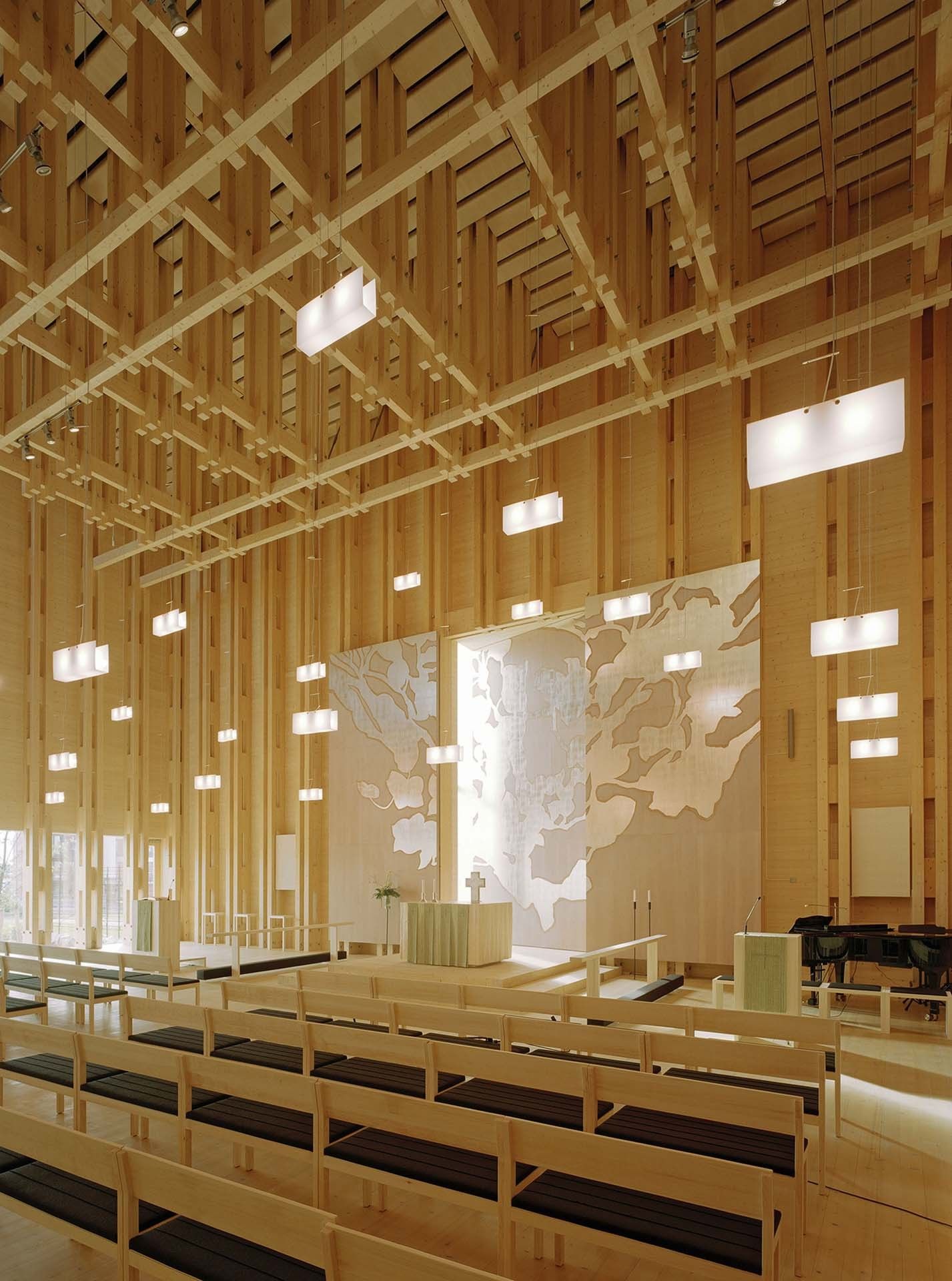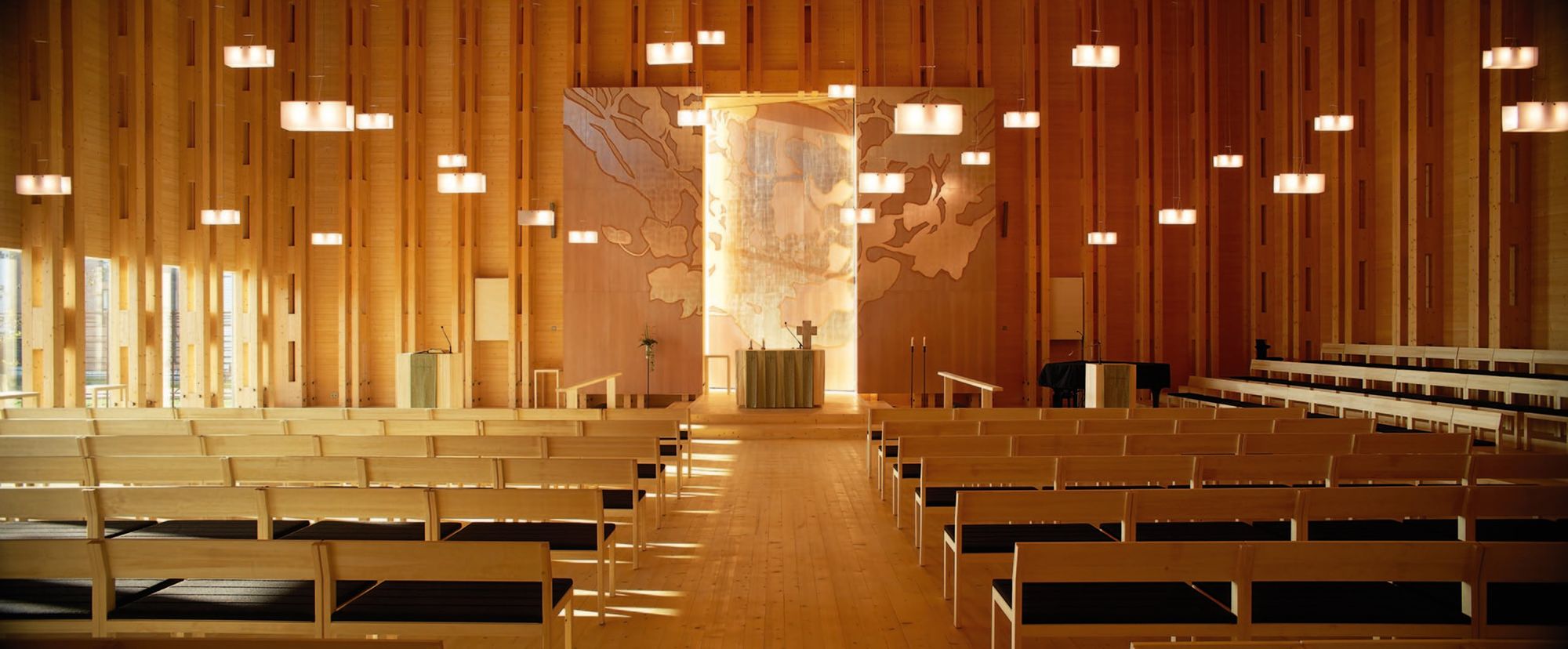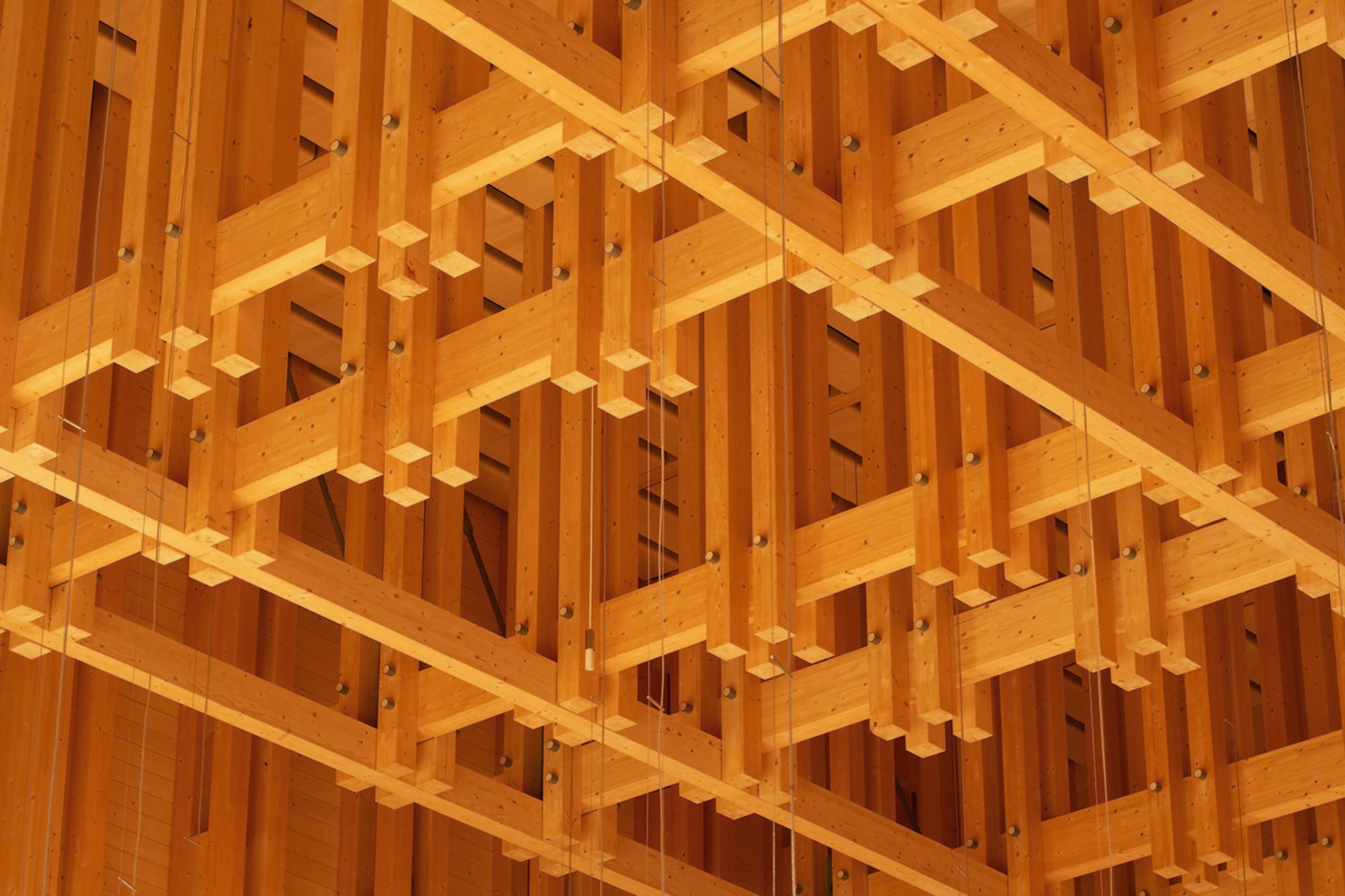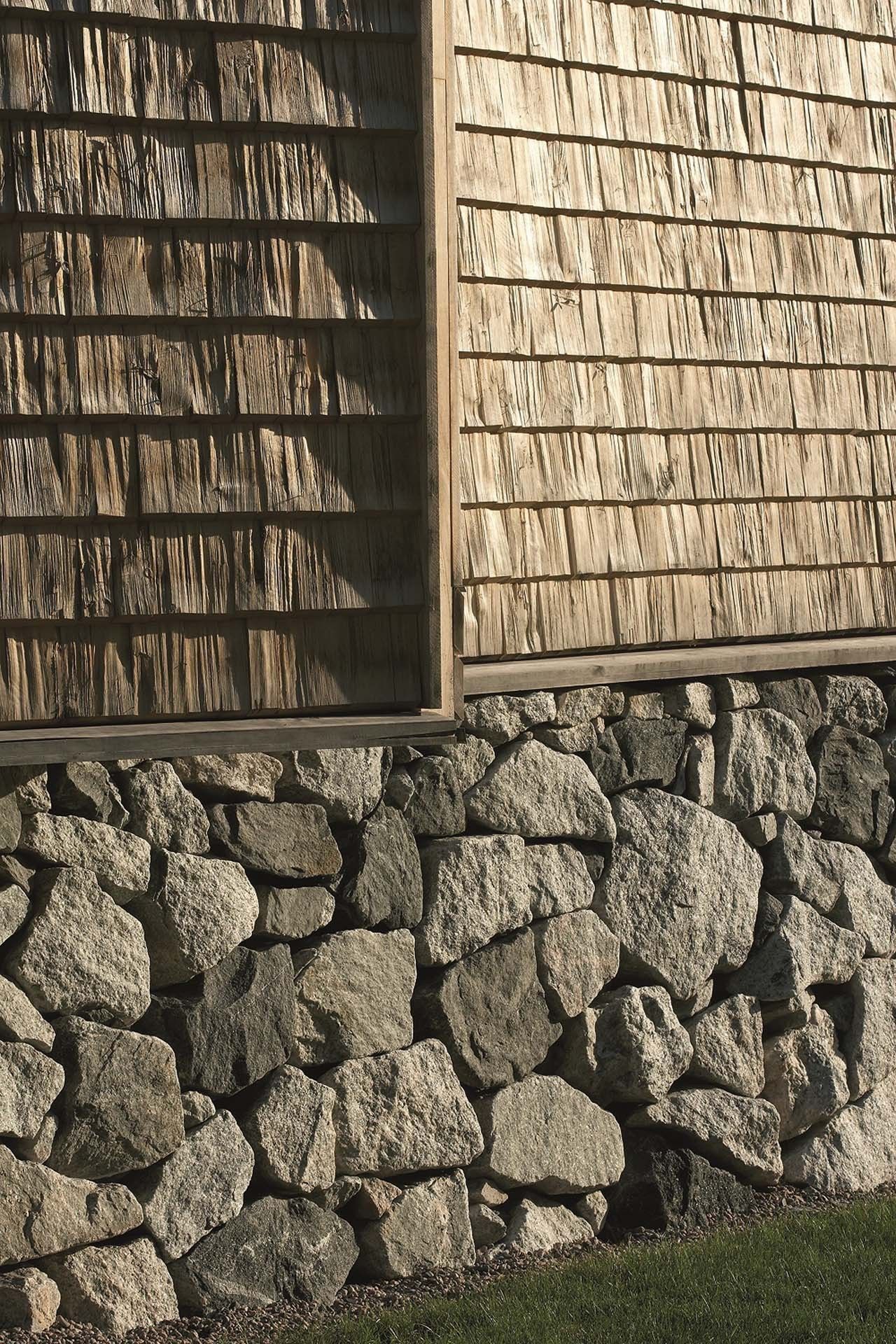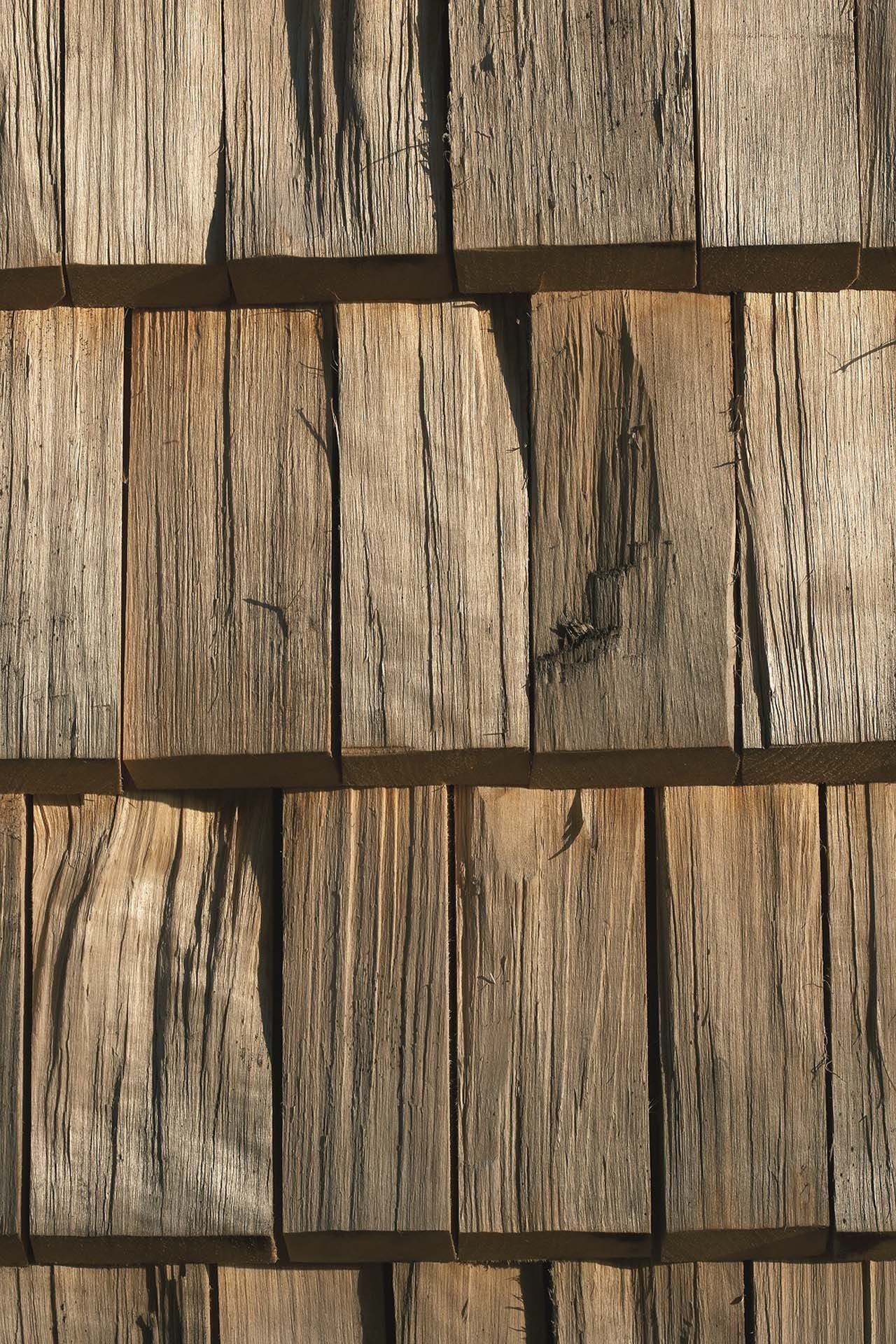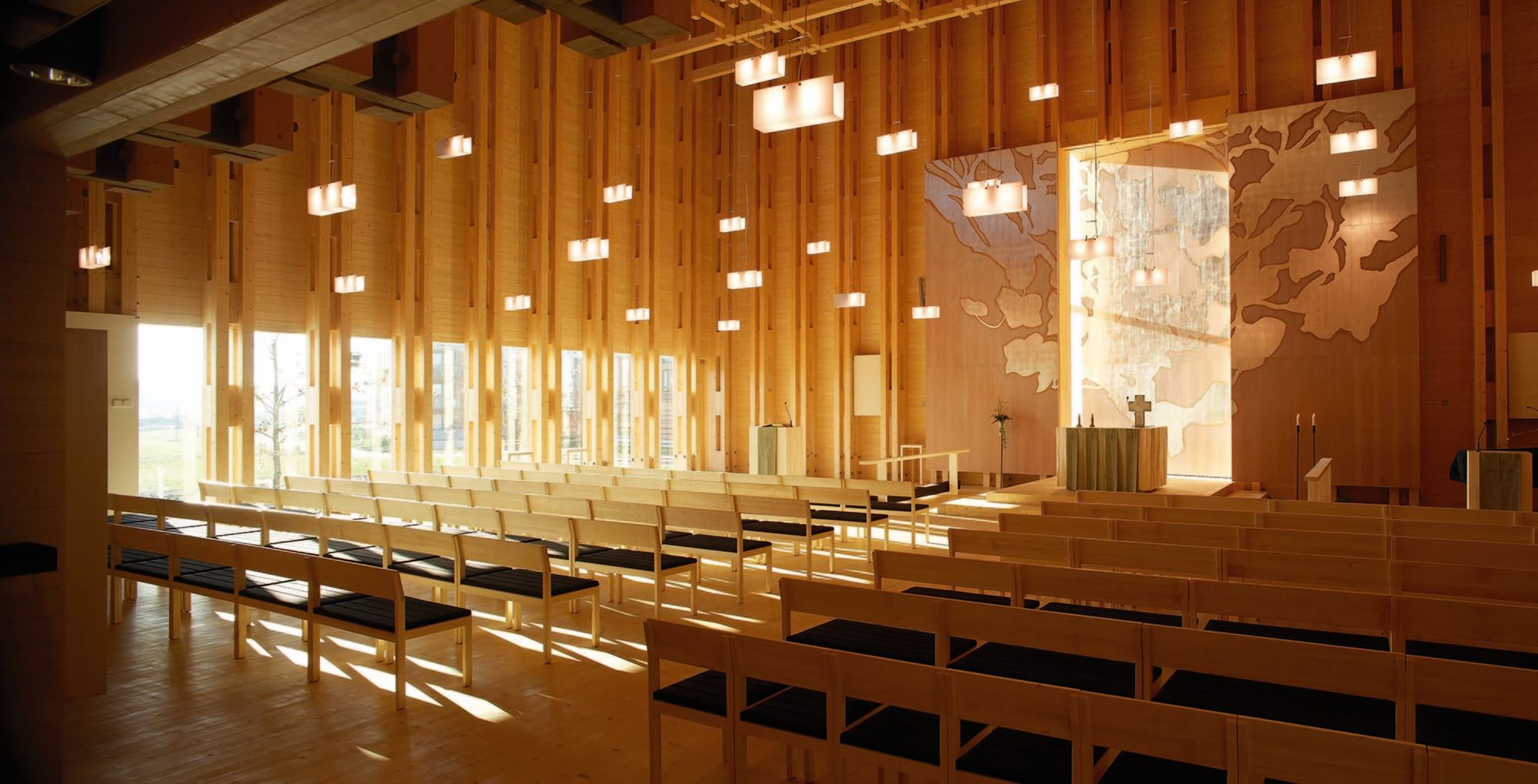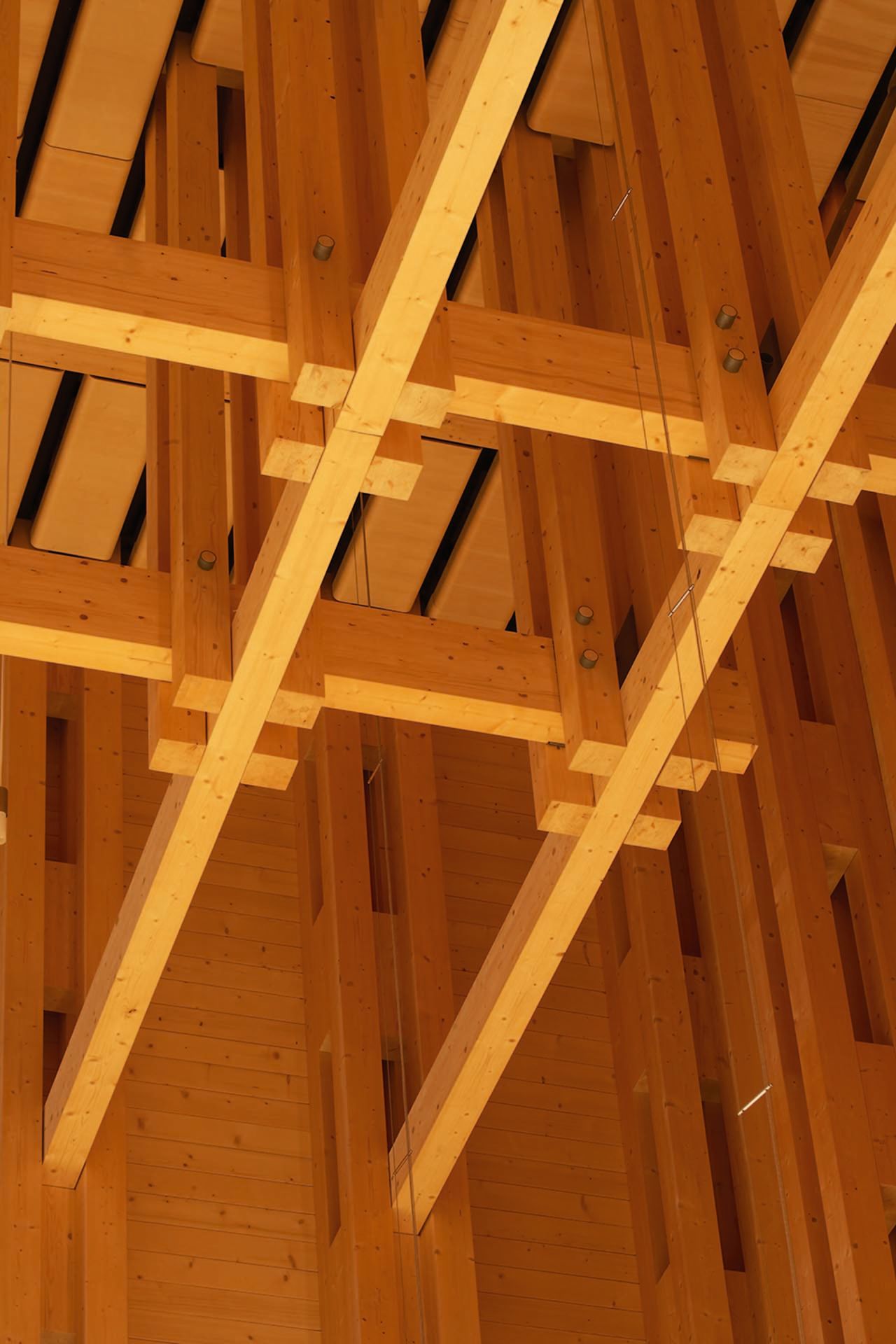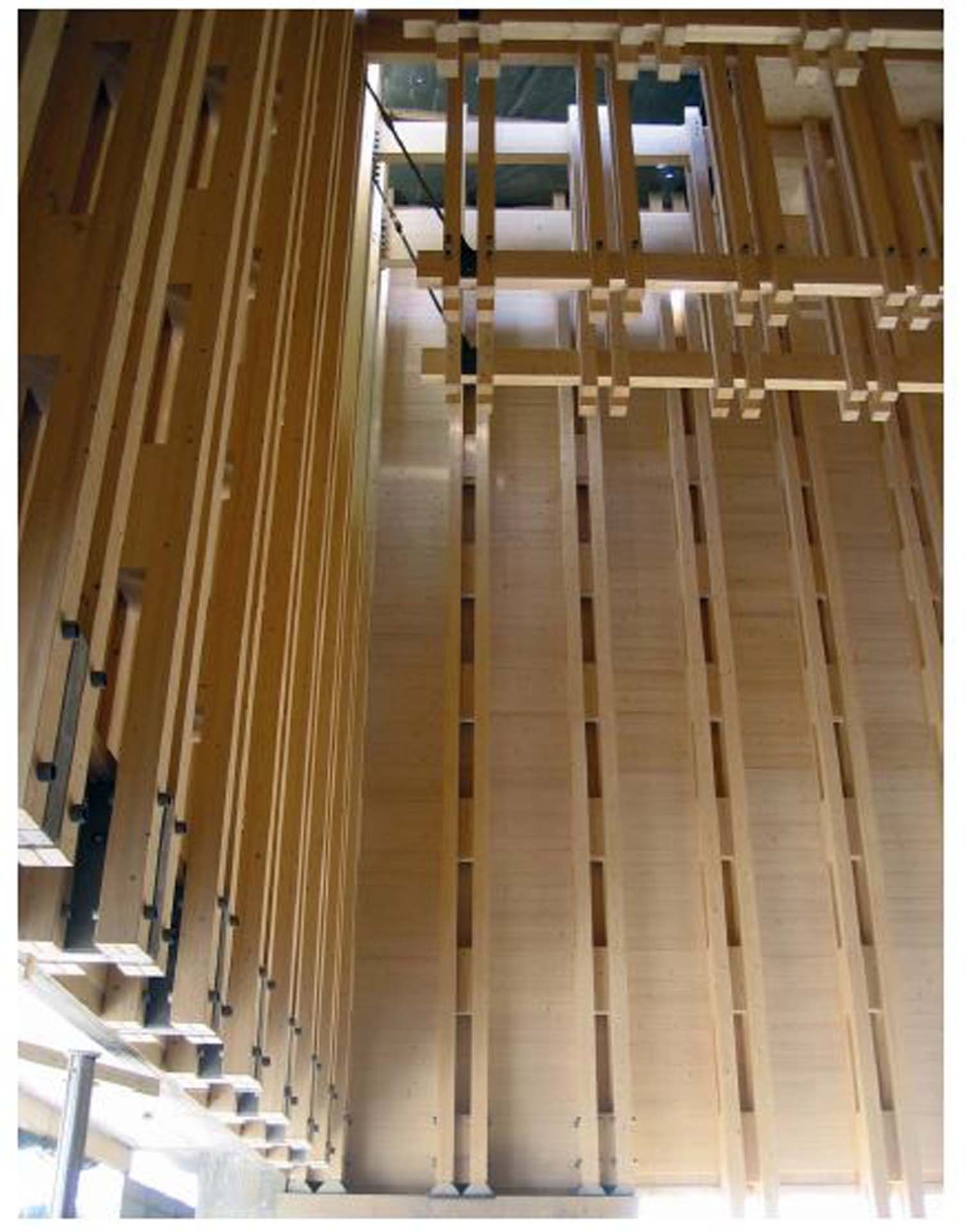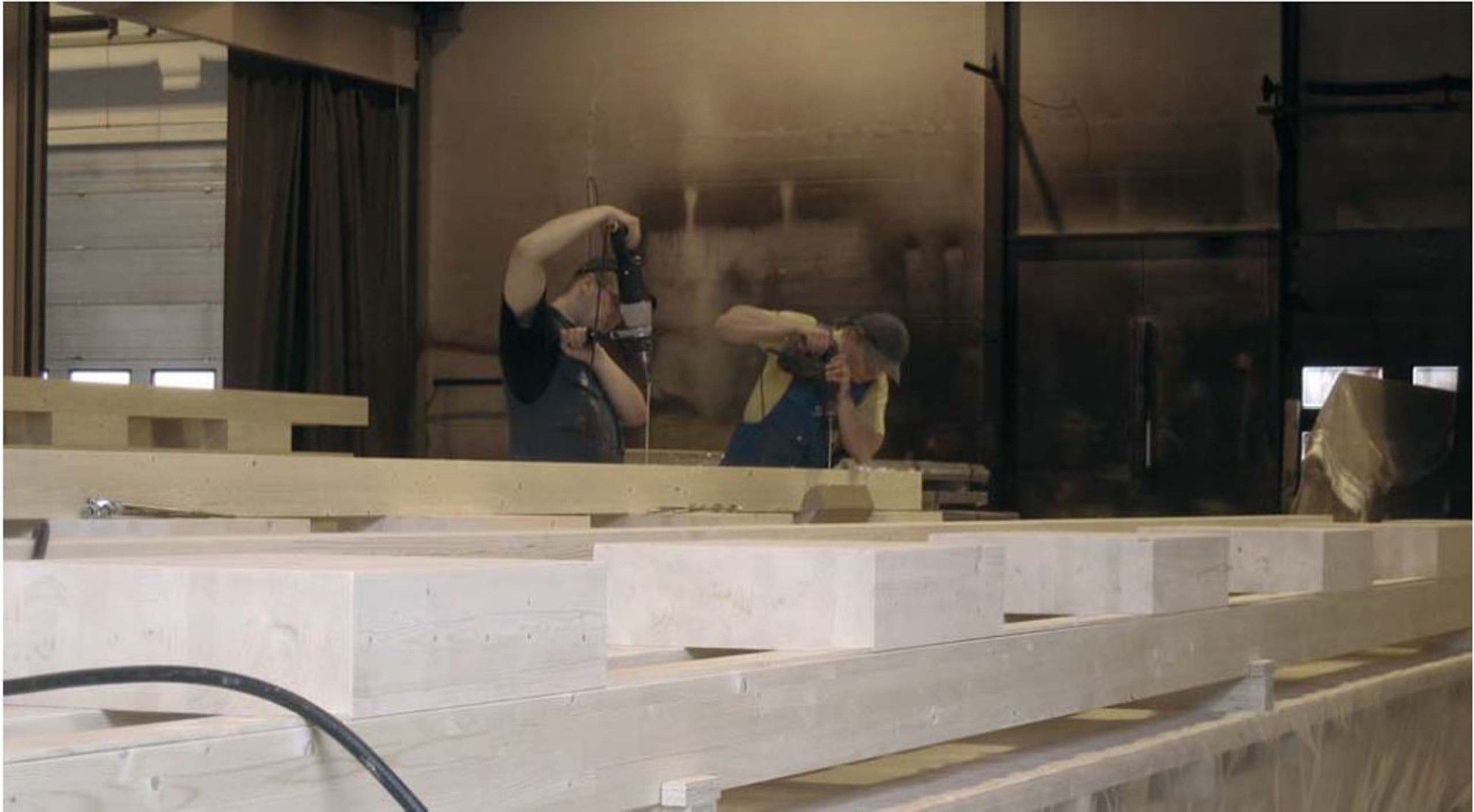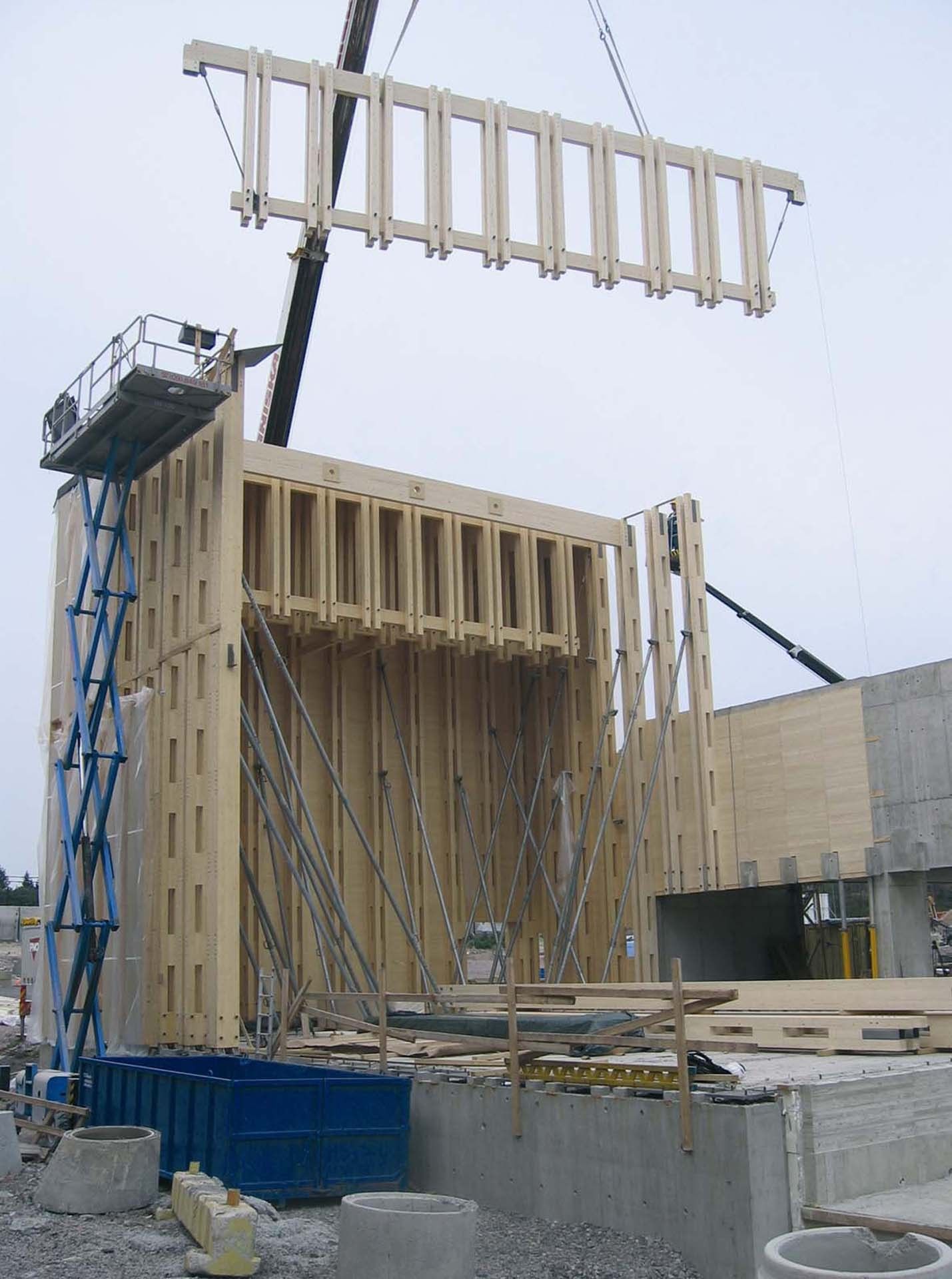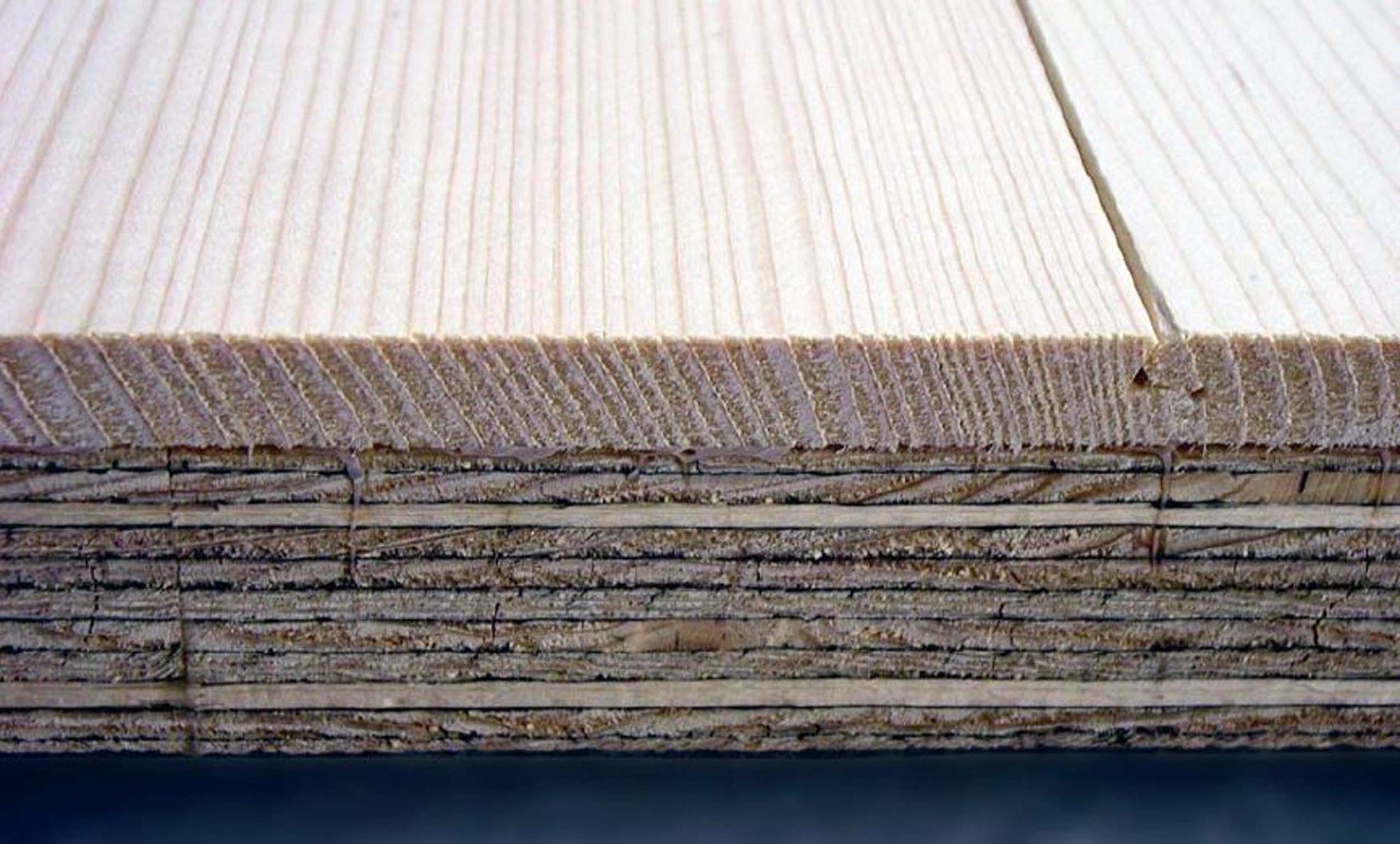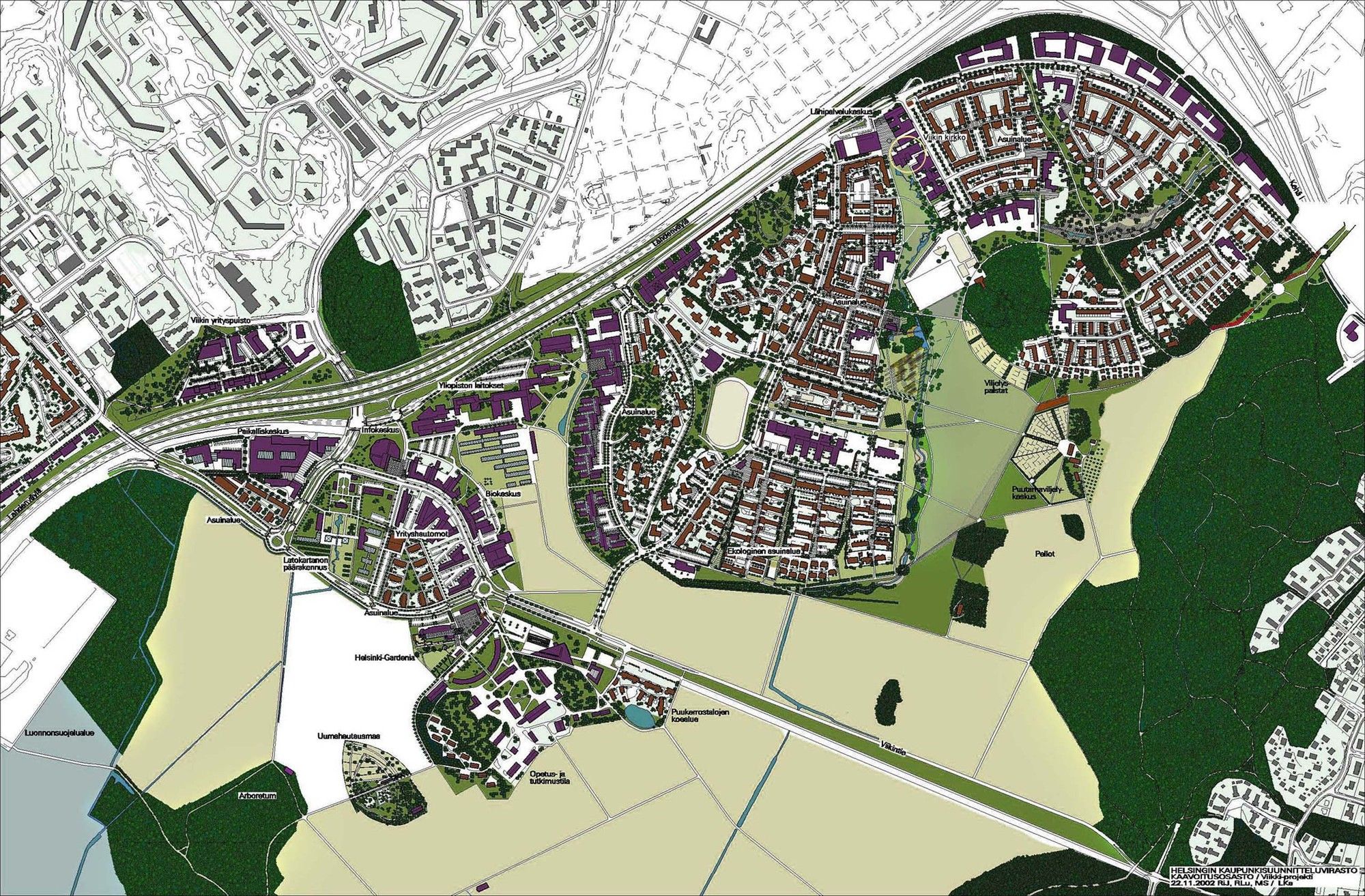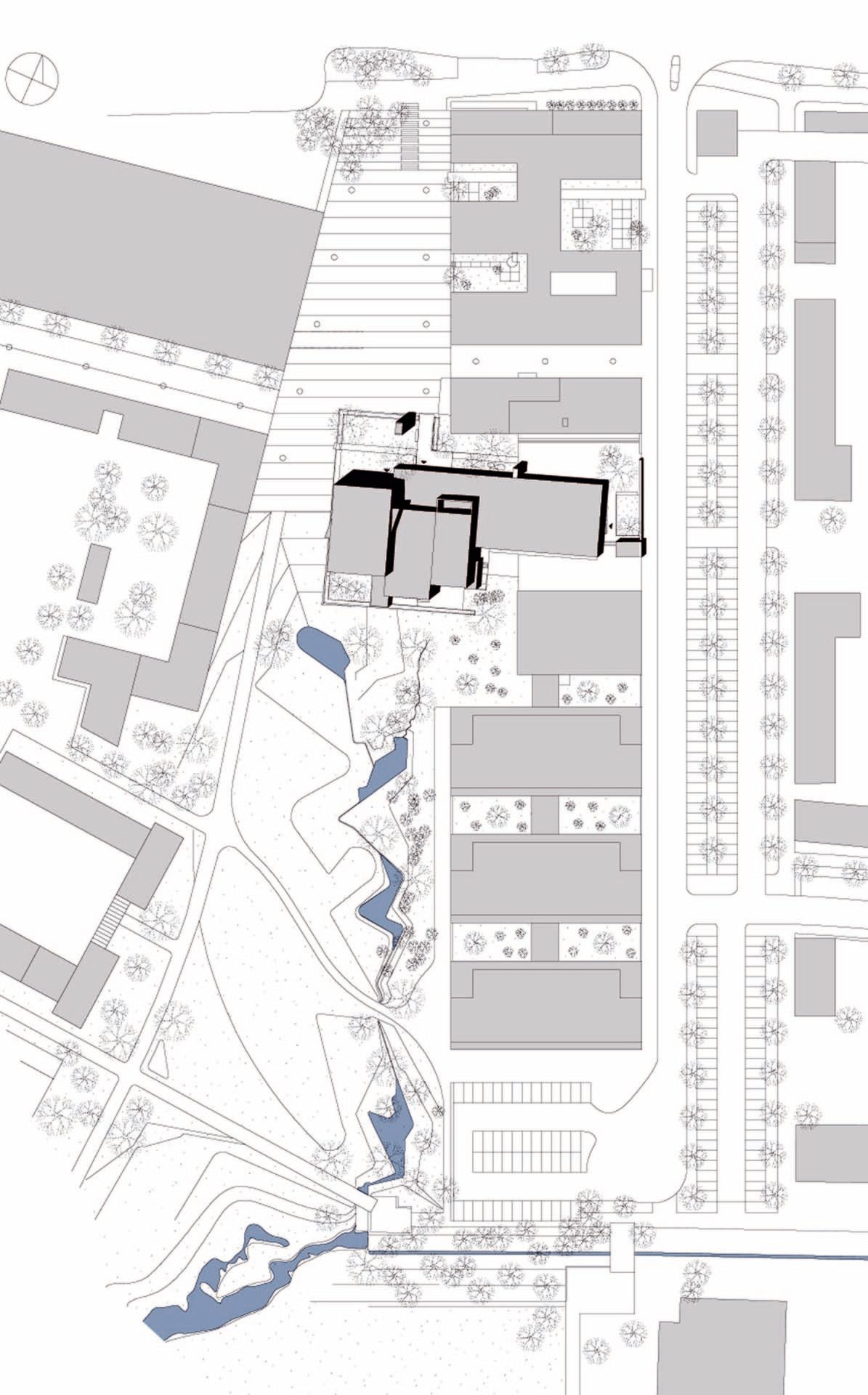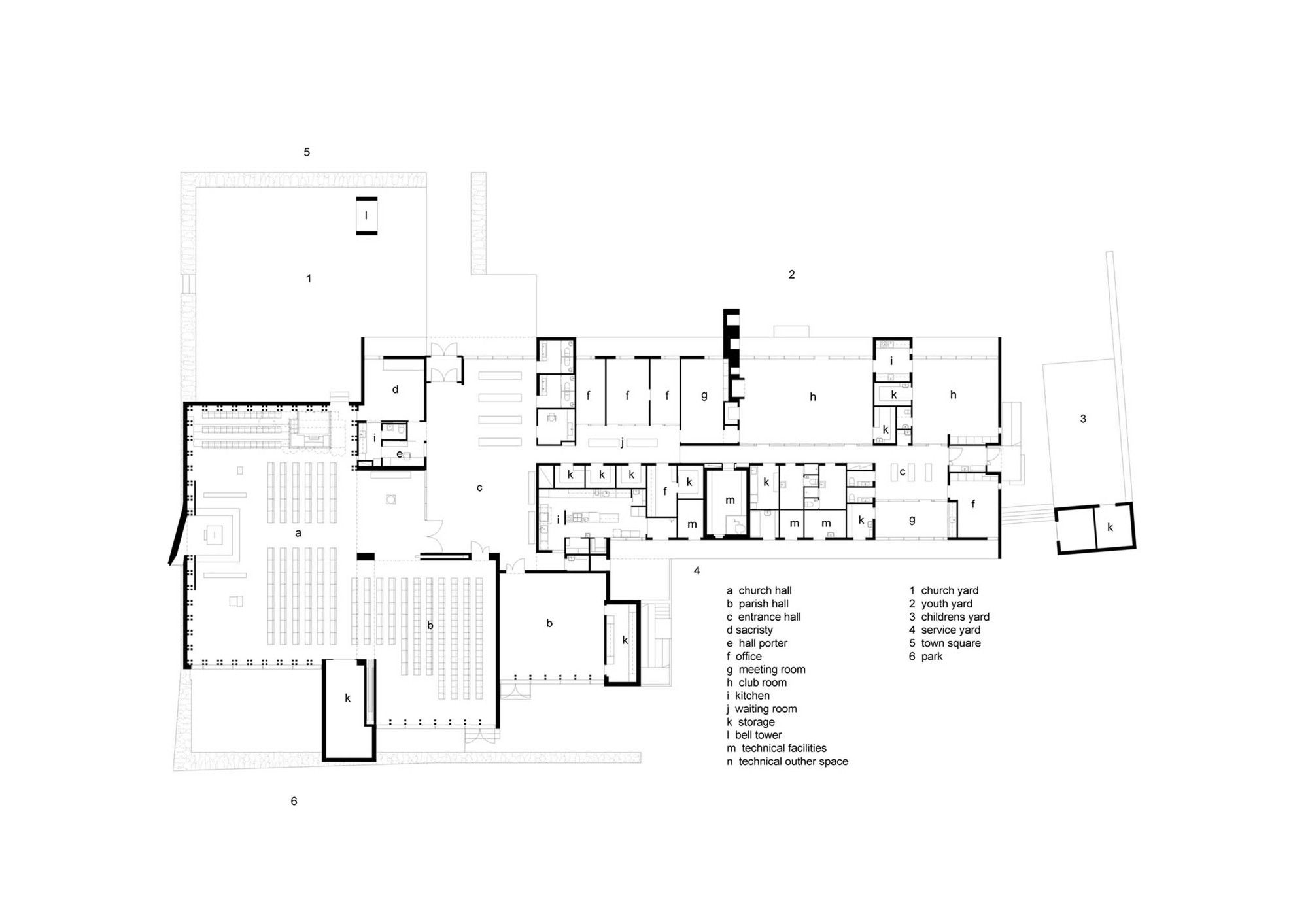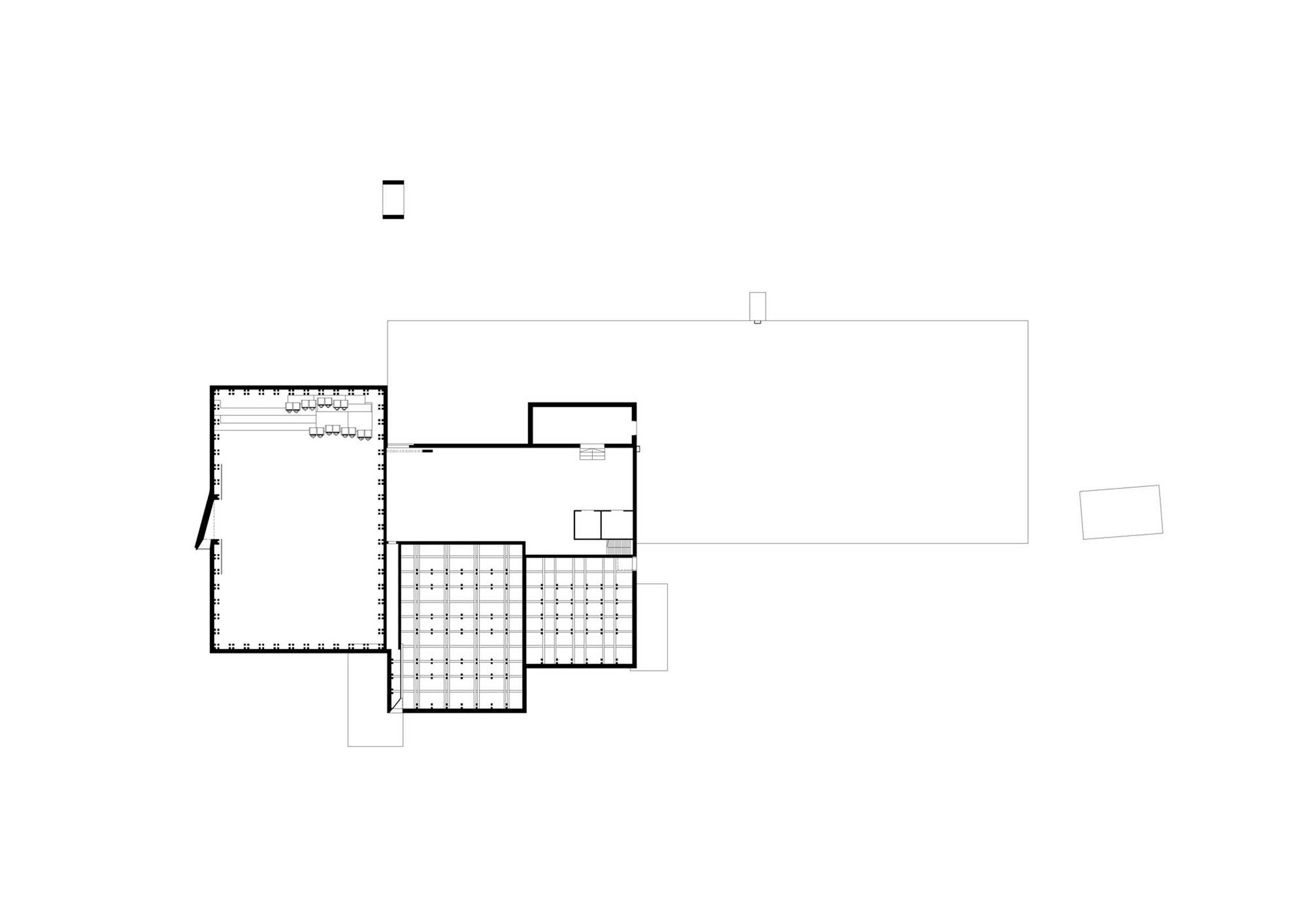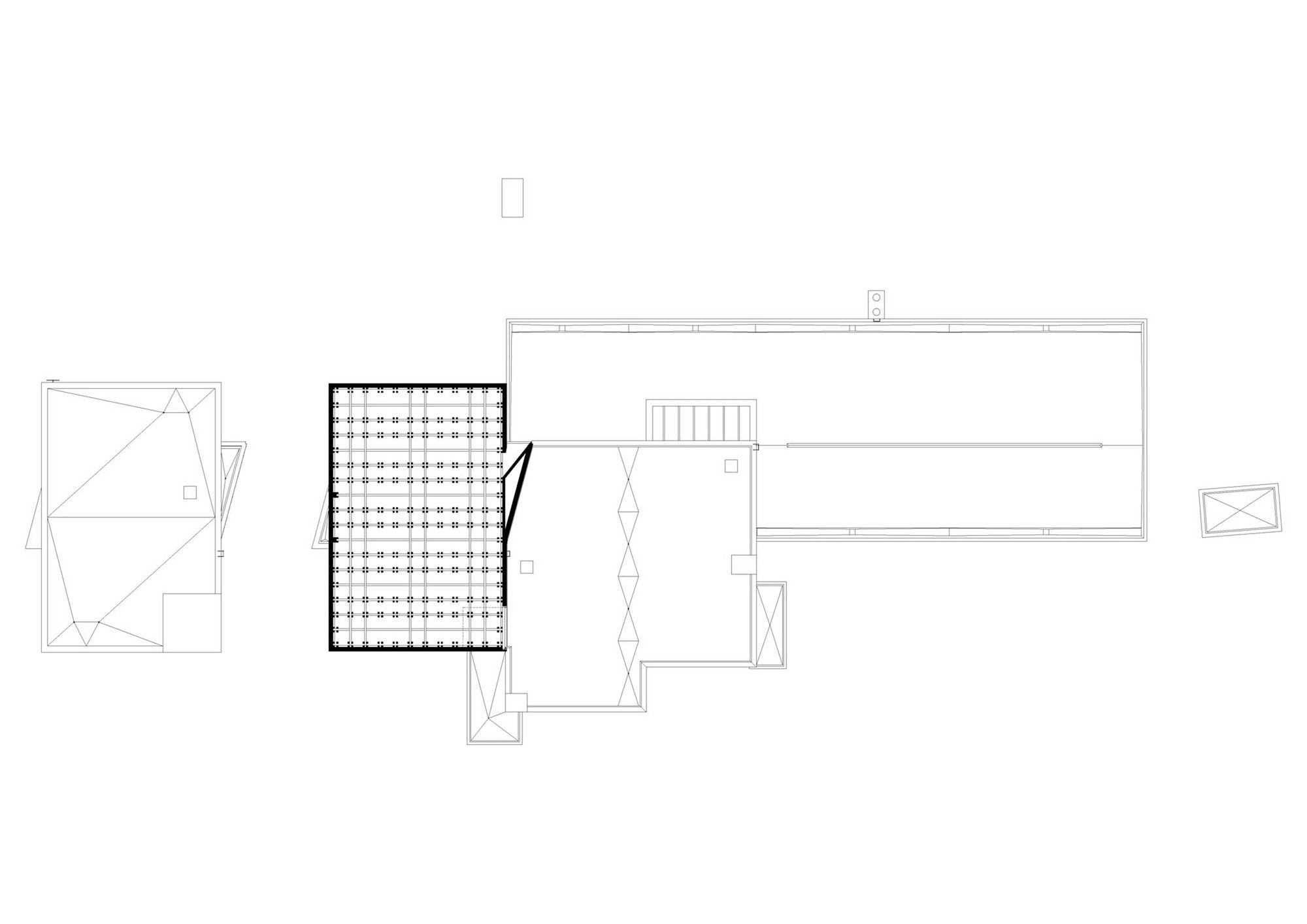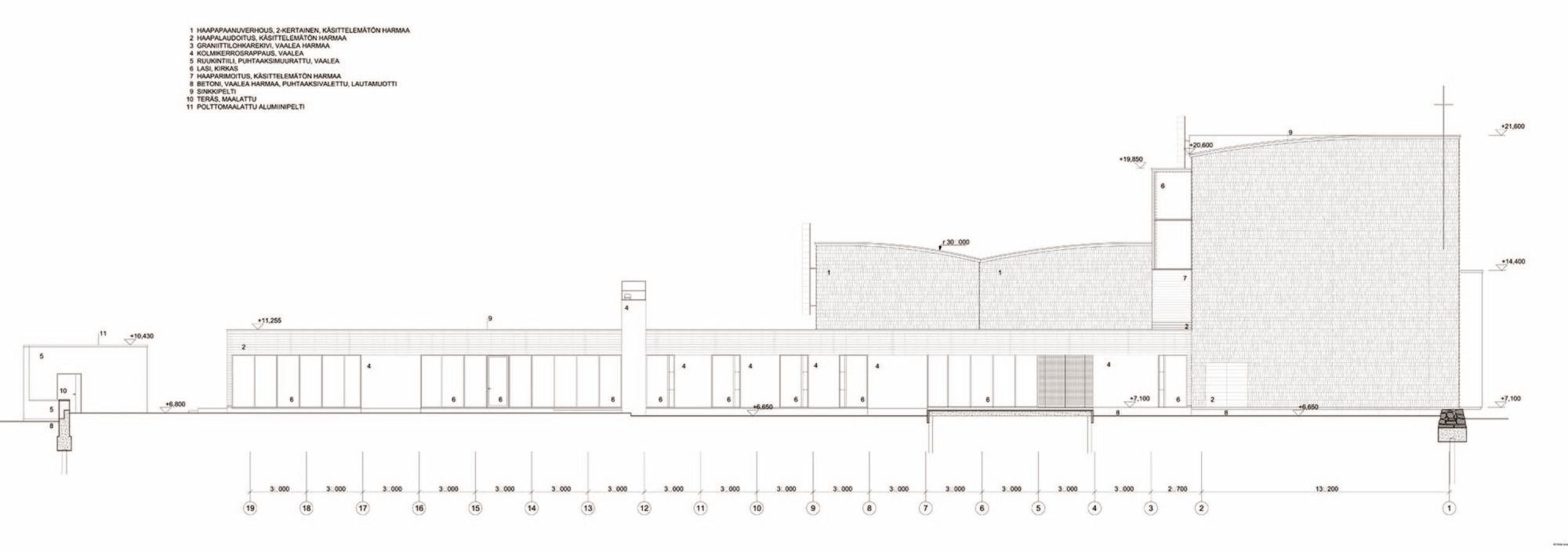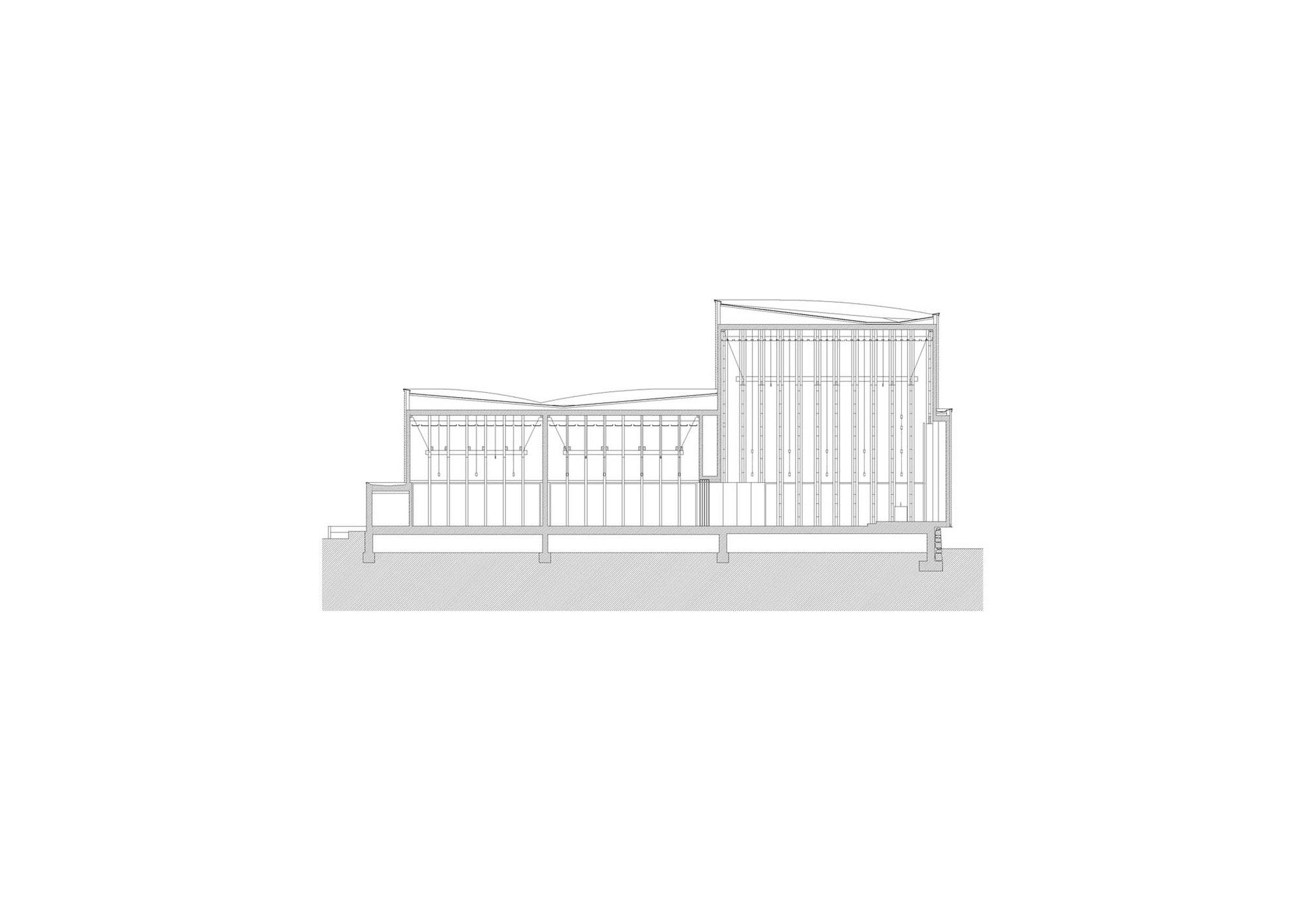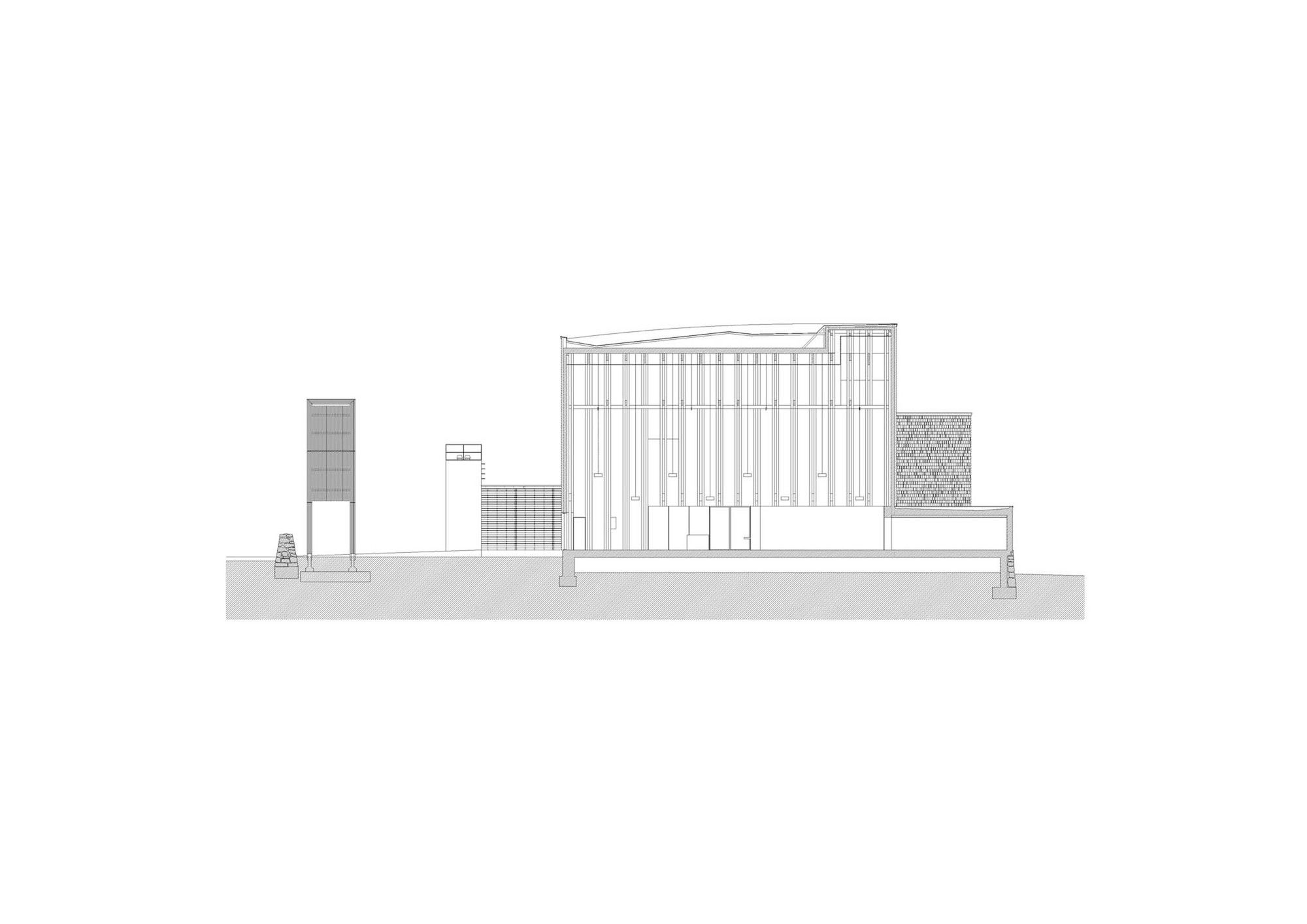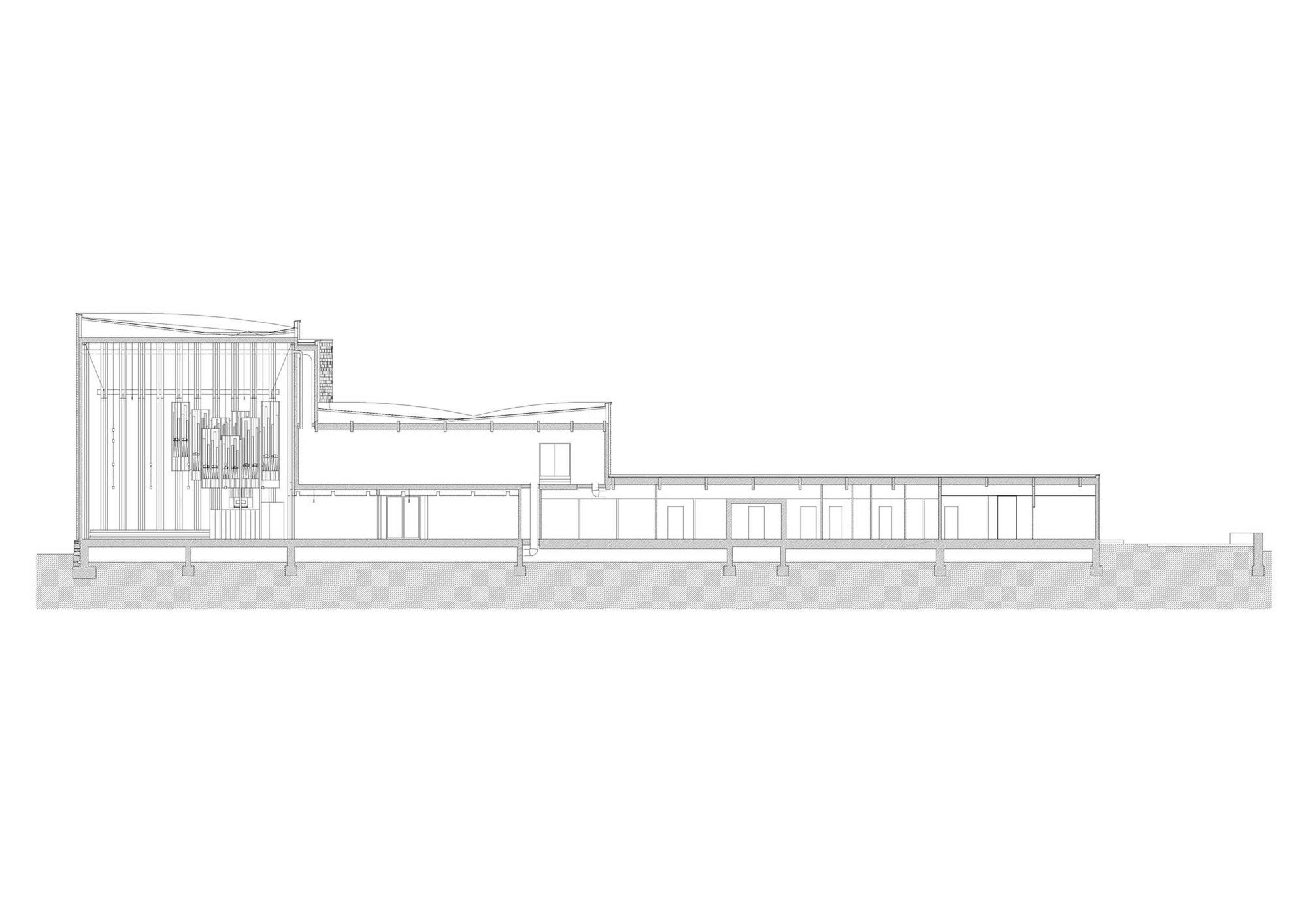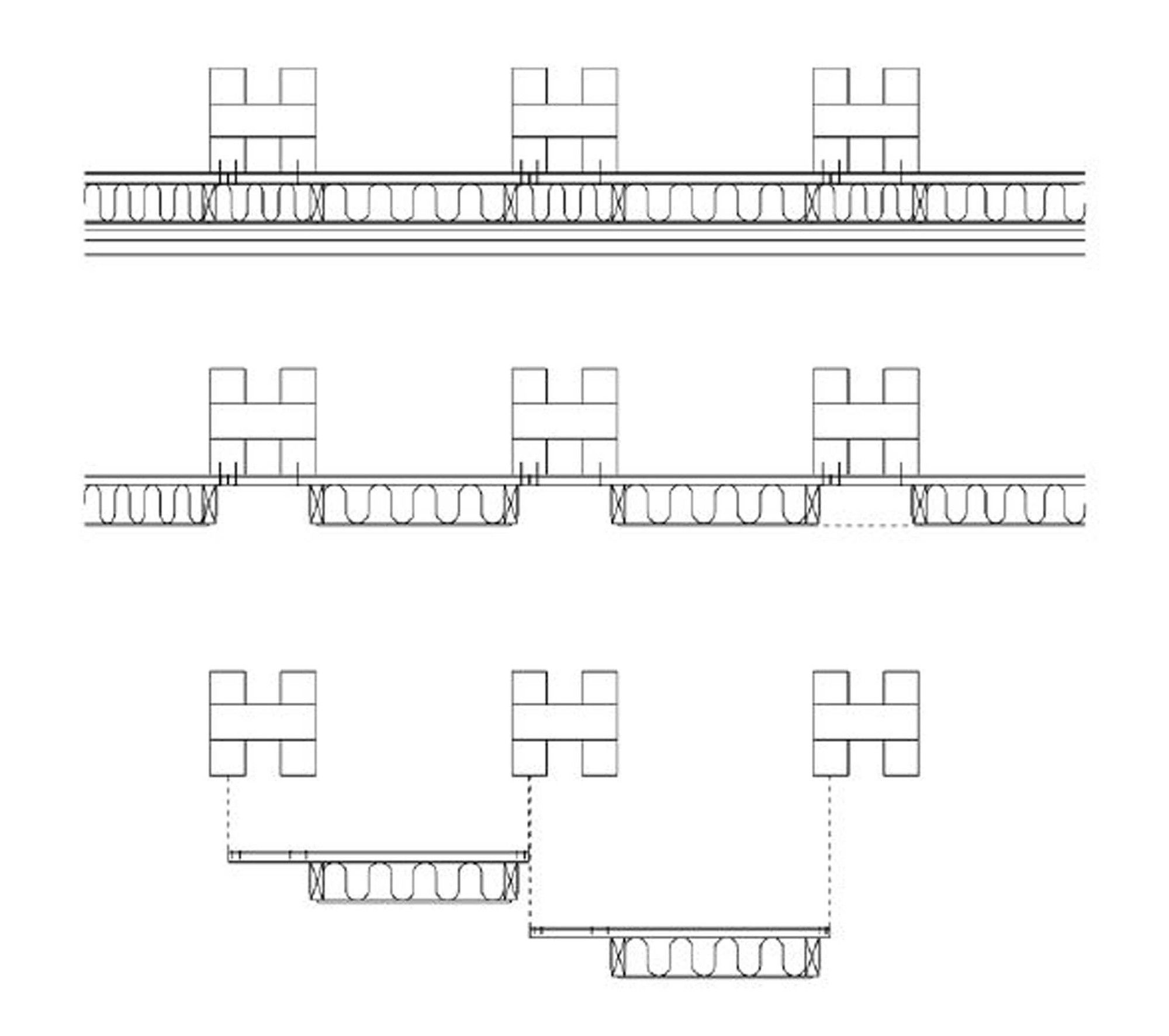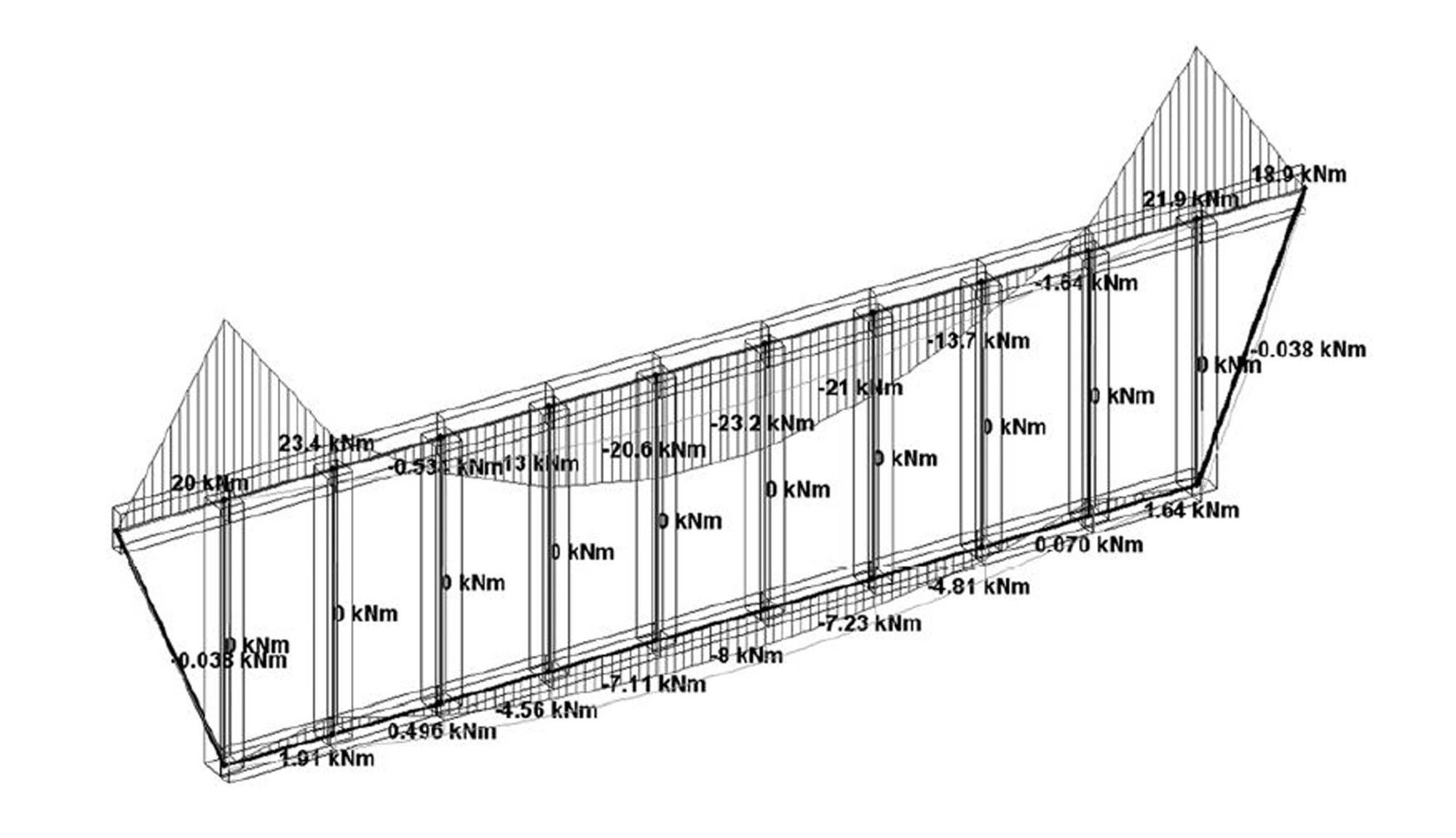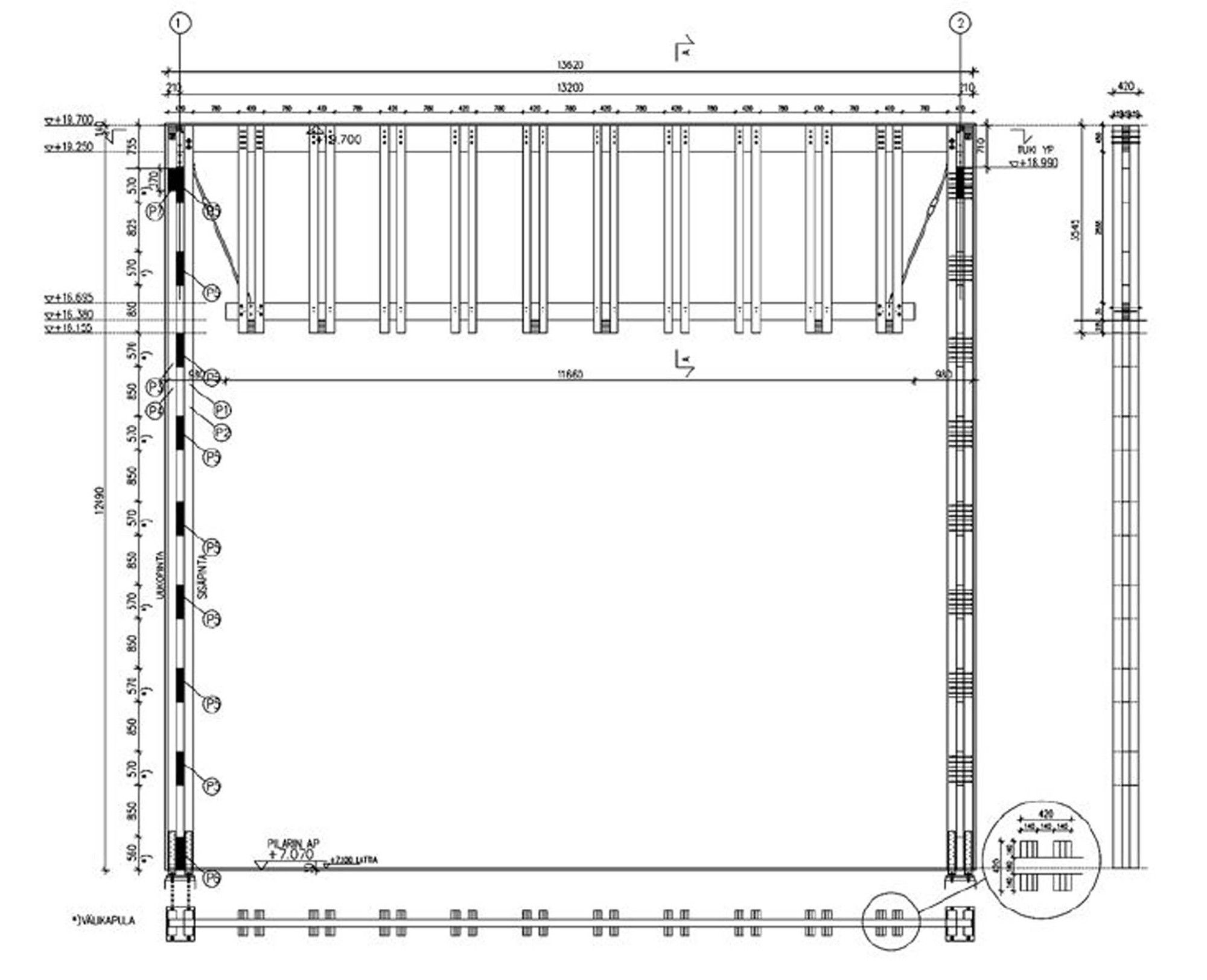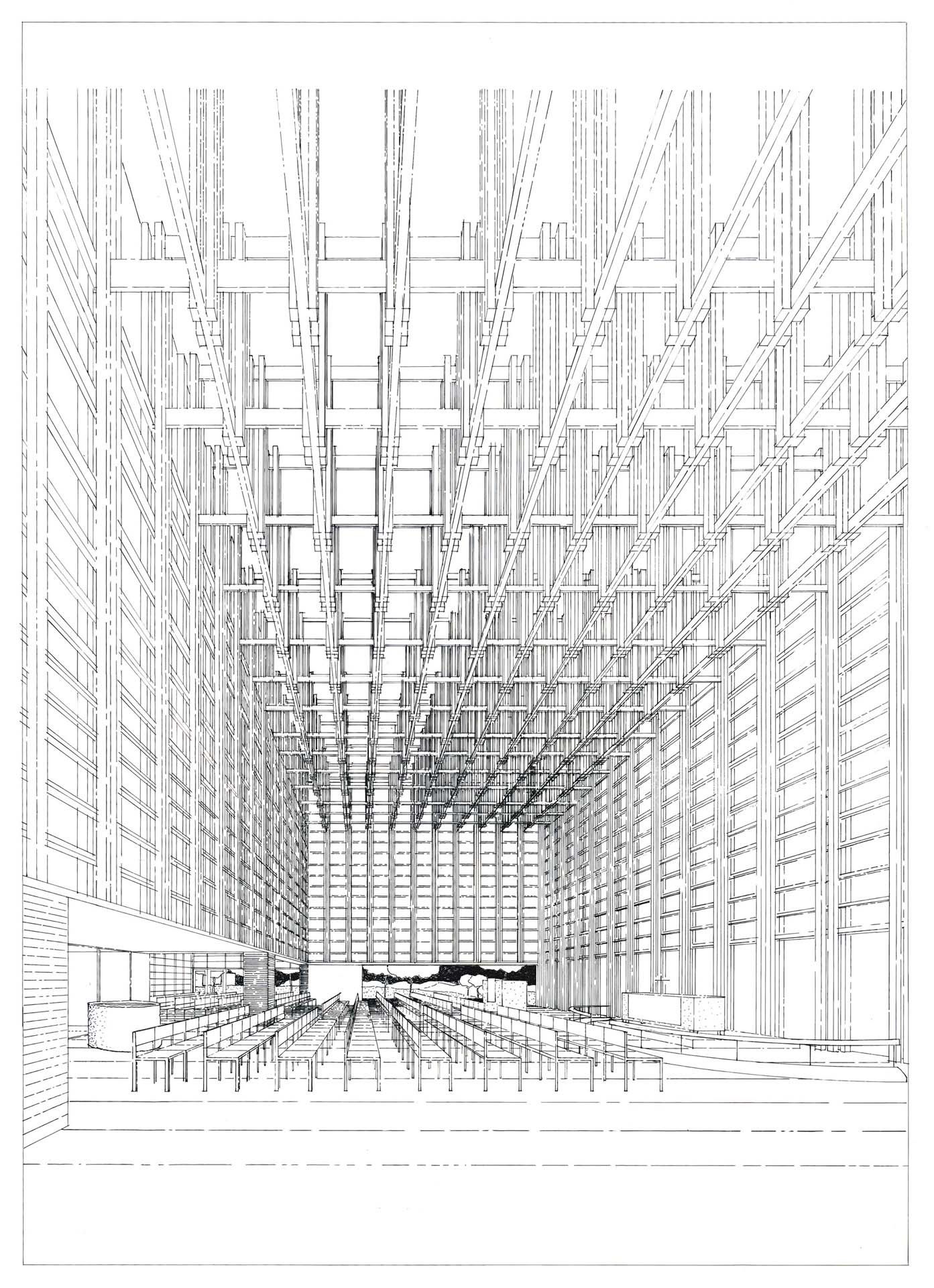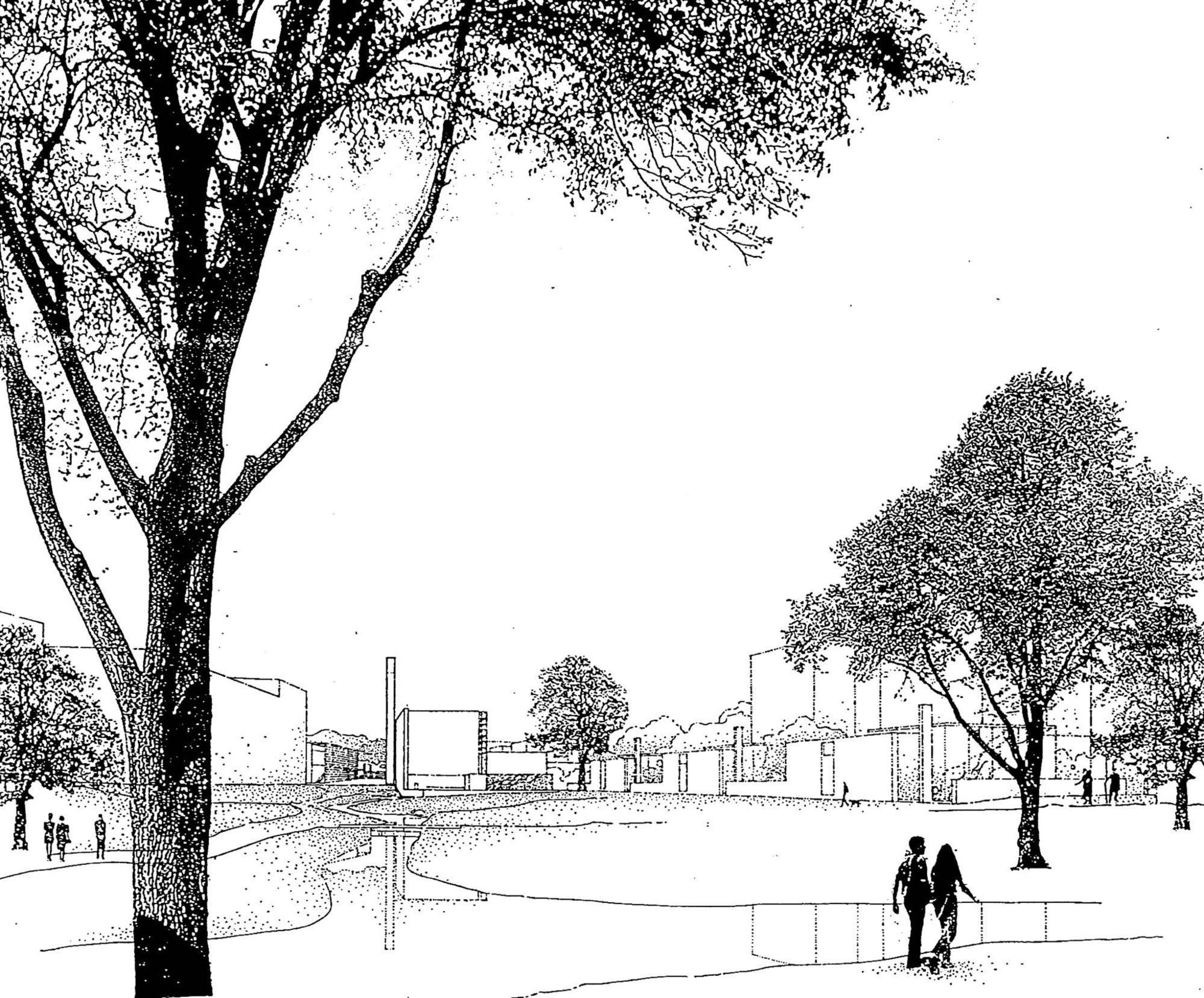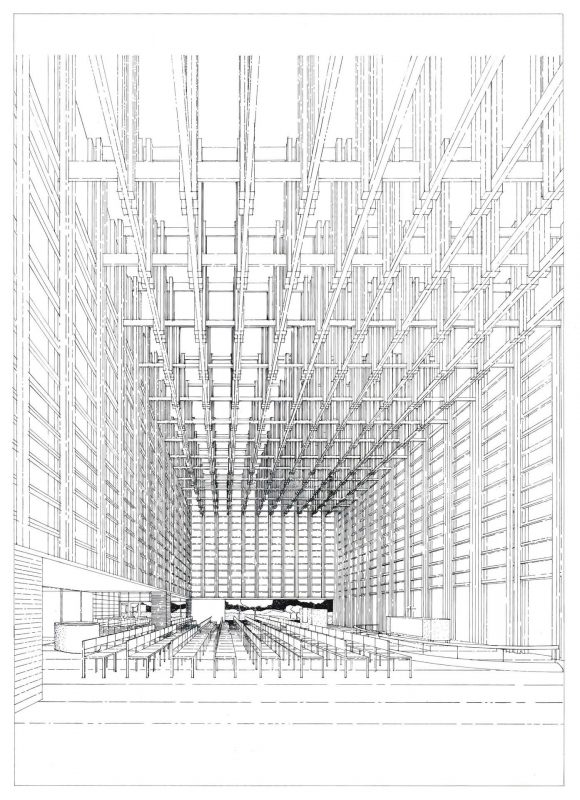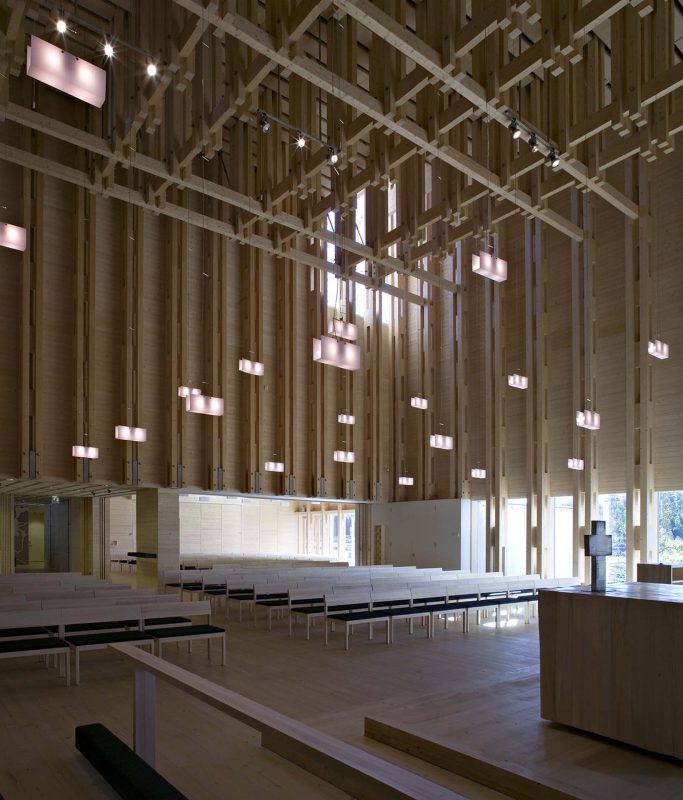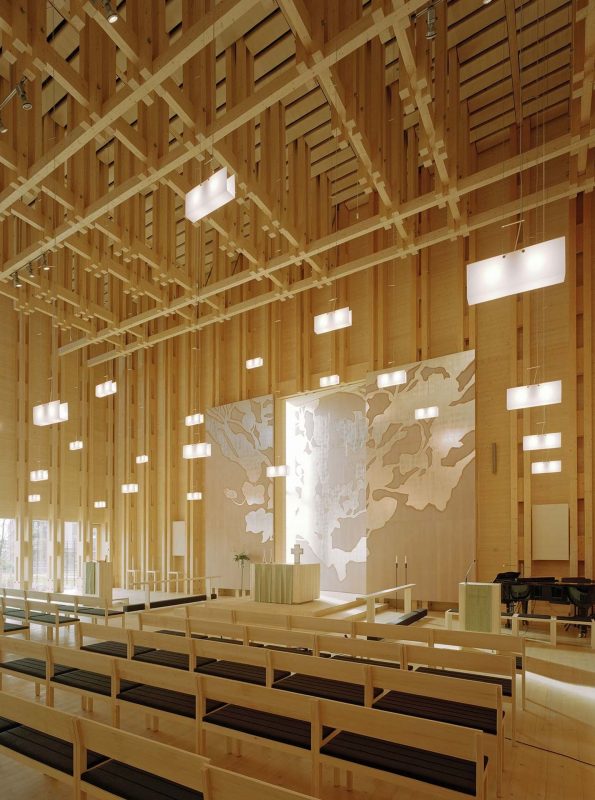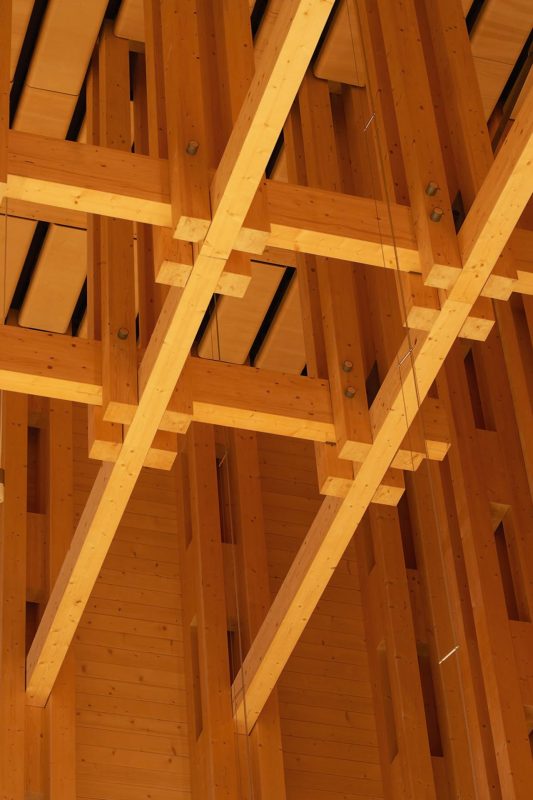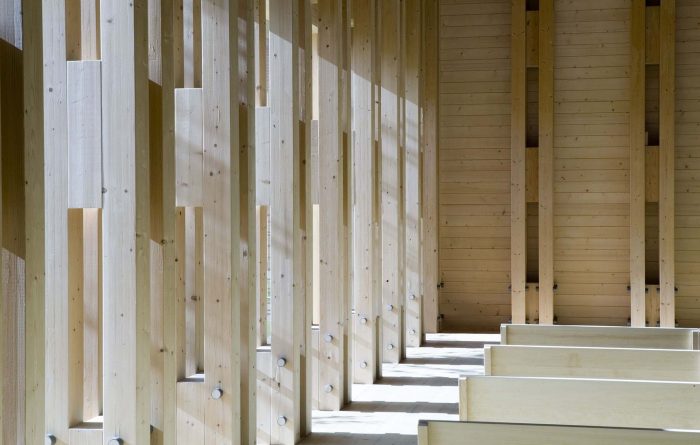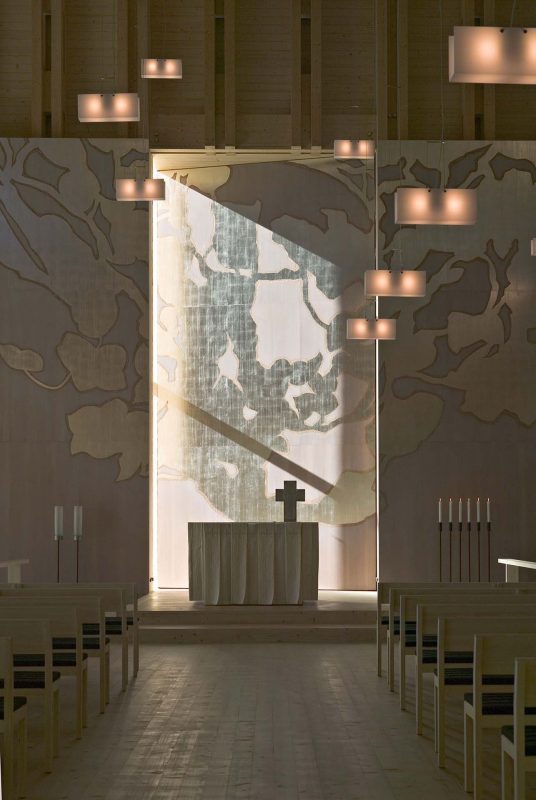Viikki Church building:
Designed by JKMM Architects, The Parish Union of Helsinki and the City of Helsinki organized an architectural invite competition for downtown Viikki Latokartano in 2000 to find a functional solution that fits in with the cityscape in order to realize the area’s public services. JKMM’s winning design of Viikki Church includes church and parish halls for the local parish, offices, and clubrooms as well as the spaces that serve these.
These spaces gather the area’s inhabitants daily for regular activities and festivities. The building can accommodate 500 people at a time, approximately 400 of which can fit in the church space. The building will cover a gross area of 1,600 square meters and will have a volume of about 10,600 cubic meters.
The fire category is the lowest one, P3. It has set as its goal the continuation of Finland’s high-quality tradition of church architecture. At the same time, the project is a trial project for the promotion of high-quality wooden construction. Construction began at the beginning of March 2004. The construction period of Viikki Church is about 16 months, including the grounds. The church is consecrated in September 2005.
The theme derives from public spaces that are ‘imago mundi’, a picture of the world, and express our understanding of what is timeless, general, and common. An unseen reality and the life of a human being are expressed in the church space.
From the first Christian basilica, church architecture has embodied the basic features of all creation. It has striven to describe the relationship between the created and the transcendent. The Viikki church is designed to be the central building connecting the eastern and western parts of Latokartano.
The church rises in the middle of a tapering space. Its distinctive direction and wood as a building material emphasize the church’s position in the area. The secular buildings of the service center are laid out in a rectangular shape, the architecture of which is created between the longitudinal brick walls by the intertwined inner and external spaces.
Relatd: 6 Breathtaking Worship House Designs Nobody’s Talking About
The structural idea of Viikki Church:
The main spatial themes of Church architecture throughout history are pure cruciform compositions. Modern church buildings have even more diverse functions. In Viikki, this cruciform composition can be seen in a broader context. The church hall rises up to form a crucial element in the life of people as an intersection between the festive and everyday, between urban space and a natural landscape.
Architectural drama is revealed when entering the buildings and as the ceilings rise to transform the spaces into high-ceilinged halls. Light spreads throughout the interior from between the wooden structures. The windows in the lower part of the halls open up to the landscape outside.
Therefore, our idea of a space gouged in a forest is realized in the halls of the church. Architecture wishes to evoke impressions of the Finnish forest; of its sacredness and common nature.
Dense wooden clustered columns and beams are architect-created structures. The structural idea is essentially defining the whole. The detail of the outer wall reflects a design concept by itself. The aim has been the all-wood atmosphere which is devout and uplifting.
In order for us to realistically and cost-effectively achieve this project’s architectural objectives, the building needed to be thought out from start to finish in order to facilitate pre-fabrication. The objective was to effortlessly integrate the pre-fabricated components with each other into an architectural entity.
The production of reasonable product parts guided architectural choices. On the other hand, architectural objectives can be placed ahead of structural efficiency in reasonable amounts in high-quality trial projects on wooden construction. This allows us to try out new implementation methods with an open mind.
As for the structural system, the primary girders in the roof of the church hall and parish hall are glulam beams, 12 of which are traditional solid wood and 20 of which are reinforced. The spacing between the girders is 1,200 mm and the spans vary from 8,700 mm in the parish hall to 13,200 mm in the church hall.
The floor-to-ceiling height of the church hall is 12,600 mm and the total height of the mass is approximately 15 meters. Owing to the architectural solution for the roofs of the halls, the demand for an economical solution could not be decisive in selecting the structural model of the high girders.
It was thus decided that a girder reinforced by a tension rod should be used in place of the traditional engineer lattice”. Particular to this girder is that the material of the tension rod changes from glulam to steel twice traveling down the length of the girder. This is justifiable as it is not possible to join the drawn (tensile stress) wooden rod to the support due to a lack of space. In addition, the building’s fire resistance class, P3, supports this solution as no demands are placed on the fire resistance of the load-bearing structures in this class, which made it possible to use unprotected steel.
The cluster piers in the halls consist of separate glulam rods that have been loaded axially and that have been connected using mechanical joints. For aesthetical reasons, attempts were made to minimize the cross-section of the cluster piers of the halls. This was made possible by the fact that a joint pier was selected as the structural model instead of a frame pier and stiffening was arranged using Kerto-Q panels in the external walls and roof.
As the panels are located in the external wall and are thus as far away from the fulcrum as possible, the characteristics of a wooden building are achieved considering the large torsional rigidity and thus the small displacements.
The parts for the glulam piers and beams were manufactured in mechanical strength grading while the lamellae were extended using finger joints that were realized similar to each other and unnoticeably on both sides of the joint, preserving the features of the wood.
The spruce trunks that were to be used for the slats were picked out of the forest in a selective manner. The logs were sawn into planks using a radial cut. After the lumber had been dried in a kiln, its moisture content was 8–9% of its dry weight. Small machine nails in the parts that remained behind the piers were used to ensure that the slats were attached.
The architectonic choices of the church were guided by prefabrication, as the church was built of factory-made components non-stop to completion. The building has been braced by attaching insulated outer wall elements to the pillars and the panels of the ceiling to the glulam beams.
The paneling was already attached to the plate stiffener of the inner walls at the factory. The architecture of the church hall was built in one go. The untreated and grey-aged façade has been clad in cleft aspen shingles and fine-sawn drop siding. The interior lining of the spruce has been treated with a wash of lye, leaving them easy to clean and renew. The acoustic elements of the false ceiling are form-pressed veneer elements.
The panels act as a base for the internal cladding of the walls and as braces for the insulation in the roof. In addition, they also contribute to thermal insulation as they are made of wood. The bracing panels are part of the wall’s structure and not a separate component, whose only function is bracing.
A model wall has been built on the property also to monitor the aging of the shake cladding during the construction period. The trial shake wall has successfully turned grey over the last 18 months. The cellular structure of the shakes has been preserved when splitting the shakes, which gives it a durable façade surface. One of the features of the aspen is that its cellular structure hardens, which is why its surface glistens beautifully.
Prefabrication vitally facilitates weather protection and installation. It is essential that the frame in these types of wood buildings be protected from the weather during construction in Finland’s variable weather conditions; for example, it rained 201 mm in Helsinki this July,
which is more than three times the average. Thus, already the conditions on the construction site require that prefabrication be advanced and that work that is susceptible to the weather be transferred to the desired conditions. As for the structural system, it should ensure that the prefabrication is as possible and support it.
Planning resulted in a prefabricated envelope and frame, whose components were manufactured in a factory and then transported to the construction site by road as they normally would be, after which they were erected as units that immediately improved the temporary stability.
In addition, solutions to protect Viikki Church from the weather were developed; these included solutions where a waterproofing element, which minimizes the penetration of water into the structures during erection and which, in the end, acts as a vapour barrier (halls) or as a final waterproofing material (clubroom area), was already placed on the elements in the factory.
In this way, the principle of ”ready to go” was applied. Installation on the frame commenced at the beginning of July and was finished in October after less than three months of work. The piers were attached to the bolt frame using steel shoes to form masts by supporting each pillar with two slanted supports.
Thermal insulation was already installed in the external wall elements at the factory. The installation sector between the elements was insulated and sealed up at the construction site once the piers had been attached. The entity stiffened up once the roof’s panel elements had been fastened to the beams from above.
Viikki Church combines modern and ancient building methods, sophisticated and rough-hewn surfaces, location and purpose, temporality, and eternity. Wood encompasses many symbolic meanings. It is a deeply human and diverse material: warm, tectonic, tactile, and workable.
The connection between mental images and the material is particularly characteristic of architecture. Modern architecture often stresses appropriateness. Before, building traditions guided construction to find appropriate but also humane solutions. As a designer, we must find a connection to a living tradition that also includes modern architecture. The intention of the client has been to create a modern successor for the long tradition of Finnish wooden churches, which takes into account the ecological ideas and criteria of sustainability of the whole Viikki area.
Project Info:
Architects: JKMM Architects
Location: HELSINKI, FINLAND
Area: 1600 m²
Project Year: 2005
Photographs: Kimmo Räisänen, Arno de la Chapelle, Jussi Tiainen, Samuli Miettinen
Manufacturers: Nikari, Loimuset Oy, Royal-kaluste Oy
Project Name: Viikki Church
